

Restaurant Business Plan PDF Example
- February 28, 2024
- Business Plan
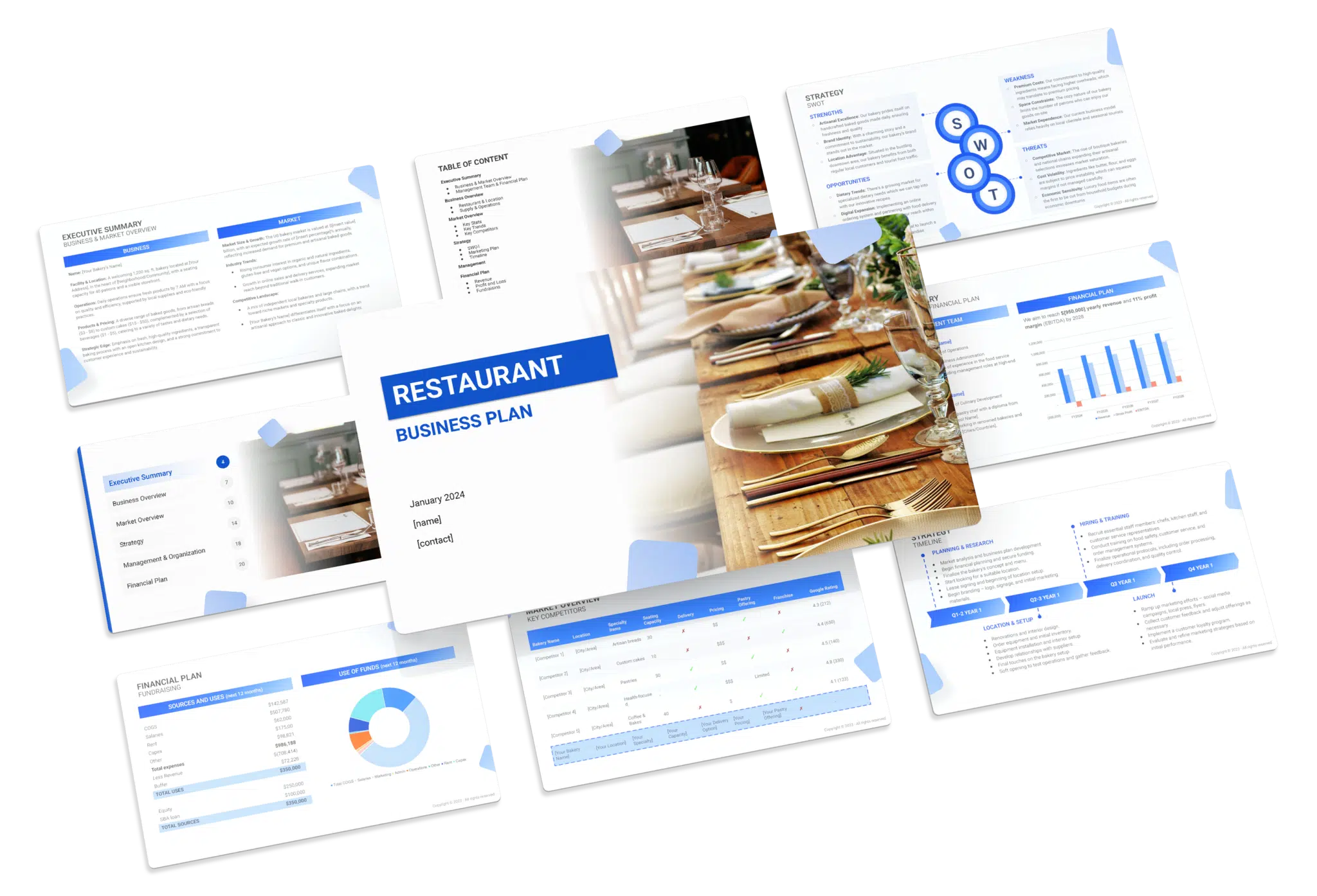
Creating a comprehensive business plan is crucial for launching and running a successful restaurant. This plan serves as your roadmap, detailing your vision, operational strategies, and financial plan. It helps establish your restaurant’s identity, navigate the competitive market, and secure funding for growth.
This article not only breaks down the critical components of a restaurant business plan, but also provides an example of a business plan to help you craft your own.
Whether you’re an experienced entrepreneur or new to the food and beverage industry, this guide, complete with a business plan example, lays the groundwork for turning your restaurant concept into reality. Let’s dive in!
Our restaurant business plan is structured to cover all essential aspects needed for a comprehensive strategy. It outlines the restaurant’s operations, marketing strategy , market environment, competitors, management team, and financial forecasts.
- Executive Summary : Offers an overview of the restaurant’s business concept, market analysis , management, and financial strategy.
- Restaurant & Location: Describes the restaurant’s prime location, size, seating capacity, and distinctive design, emphasizing its appeal to the target demographic.
- Supply & Operations: Outlines the supply chain management, focusing on local sourcing and quality ingredients, and details the operational aspects, including kitchen layout, equipment, and front-of-house operations.
- Key Stats: Shares industry size , growth trends, and relevant statistics for the full-service restaurant market.
- Key Trends: Highlights recent trends affecting the restaurant sector, such as health-conscious dining, sustainability, and technology integration.
- Key Competitors : Analyzes the main competitors in the vicinity, showcasing the restaurant’s unique selling proposition in comparison.
- SWOT: Strengths, weaknesses, opportunities, and threats analysis.
- Marketing Plan : Strategies for promoting the restaurant to maximize visibility and customer engagement.
- Timeline : Key milestones and objectives from the initial setup through the launch and operational optimization.
- Management: Information on who manages the restaurant and their roles.
- Financial Plan: Projects the restaurant’s financial performance, including revenue, profits, and expected expenses, aiming for profitability and sustainable growth.

Restaurant Business Plan

Fully editable 30+ slides Powerpoint presentation business plan template.
Download an expert-built 30+ slides Powerpoint business plan template
Executive Summary
The Executive Summary introduces your restaurant’s business plan, offering a concise overview of your establishment and its offerings. It should detail your market positioning, the variety of cuisines and dining experiences you offer, its location, size, and an outline of day-to-day operations.
This section should also explore how your restaurant will integrate into the local market, including the number of direct competitors within the area, identifying who they are, along with your restaurant’s unique selling points that differentiate it from these competitors.
Furthermore, you should include information about the management and co-founding team, detailing their roles and contributions to the restaurant’s success. Additionally, a summary of your financial projections, including revenue and profits over the next five years, should be presented here to provide a clear picture of your restaurant’s financial plan.
Make sure to cover here _ Business Overview _ Market Overview _ Management Team _ Financial Plan
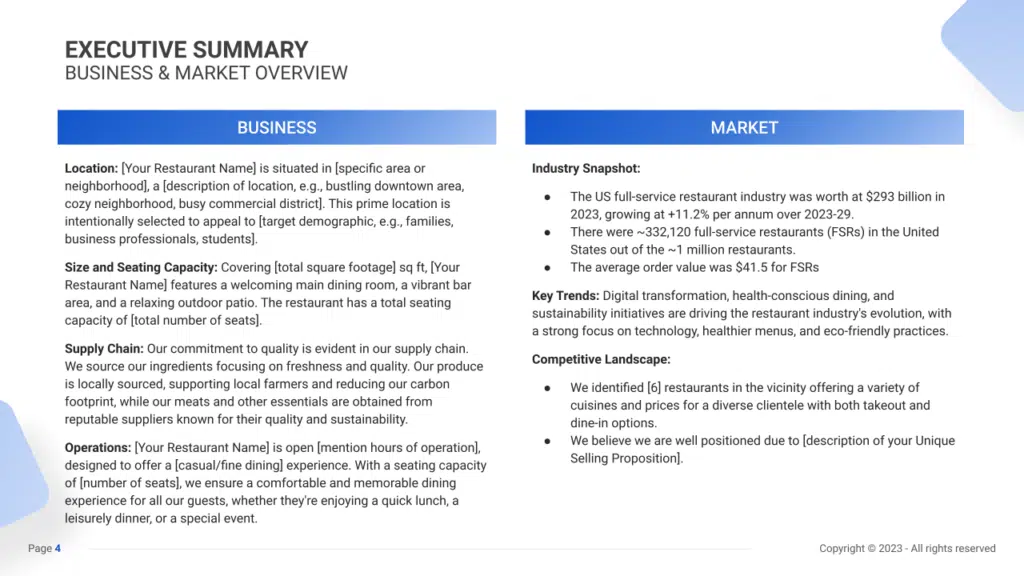
Dive deeper into Executive Summary
Business Overview
For a Restaurant, the Business Overview section can be concisely divided into 2 main slides:
Restaurant & Location
Briefly describe the restaurant’s physical environment, emphasizing its design, ambiance, and the overall dining experience it offers to guests. Mention the restaurant’s location, highlighting its accessibility and the convenience it offers to diners, such as proximity to entertainment venues or ease of parking. Explain why this location is advantageous in attracting your target clientele.
Supply & Operations
Detail the range of cuisines and dishes offered, from appetizers and main courses to desserts and specialty beverages. Outline your sourcing strategy, ensuring it reflects a commitment to quality and sustainability, and matches the market you’re targeting.
Highlight any unique culinary techniques, exclusive ingredients, or innovative kitchen technologies that set your restaurant apart. Discuss your operational strategies, including inventory management, supplier relationships, and kitchen workflow, to ensure efficiency and consistency in delivering exceptional dining experiences.
Make sure to cover here _ Restaurant & Location _ Supply & Operations
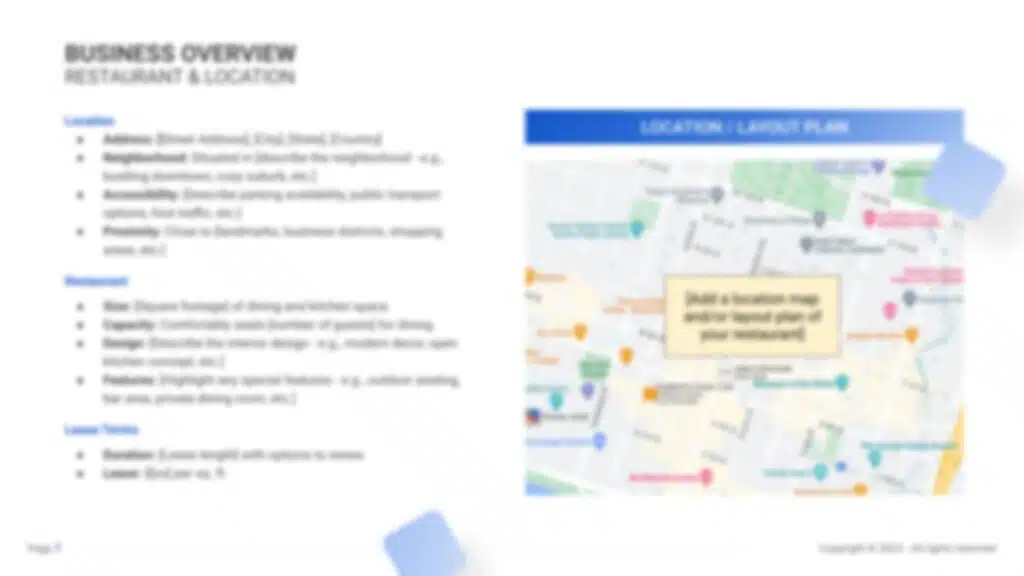
Market Overview
Industry size & growth.
In the Market Overview of your restaurant business plan, start by examining the size of the restaurant industry and its growth potential. This analysis is crucial for understanding the market’s scope and identifying expansion opportunities.
Key market trends
Proceed to discuss recent market trends , such as the increasing consumer interest in farm-to-table dining, ethnic cuisines, and experiential dining experiences.
For example, highlight the demand for restaurants that offer unique cultural dishes, the growing popularity of health-conscious and dietary-specific menus, and the integration of technology in enhancing the dining experience.
Key competitors
Then, consider the competitive landscape, which includes a range of dining establishments from gourmet fine dining to fast-casual eateries, as well as the rise of food delivery services and meal kits.
For example, emphasize what makes your restaurant distinctive, whether it’s through a unique culinary approach, a niche market focus, or a strong commitment to sustainability and local sourcing.
Make sure to cover here _ Industry size & growth _ Key market trends _ Key competitors

Dive deeper into Key competitors
First, conduct a SWOT analysis for the restaurant , highlighting Strengths (such as a unique menu and exceptional customer service), Weaknesses (including potential high operational costs or strong competition in the area), Opportunities (for example, a growing interest in diverse cuisines and healthy eating), and Threats (such as economic downturns that may decrease consumer spending on dining out).
Marketing Plan
Next, develop a marketing strategy that outlines how to attract and retain customers through targeted advertising, promotional discounts, an engaging social media presence, food blogger outreach, and community involvement, such as local events or charity sponsorships.
Finally, create a detailed timeline that outlines critical milestones for the restaurant’s opening, marketing campaigns, customer base growth, and expansion objectives, ensuring the business moves forward with clear direction and purpose.
Make sure to cover here _ SWOT _ Marketing Plan _ Timeline
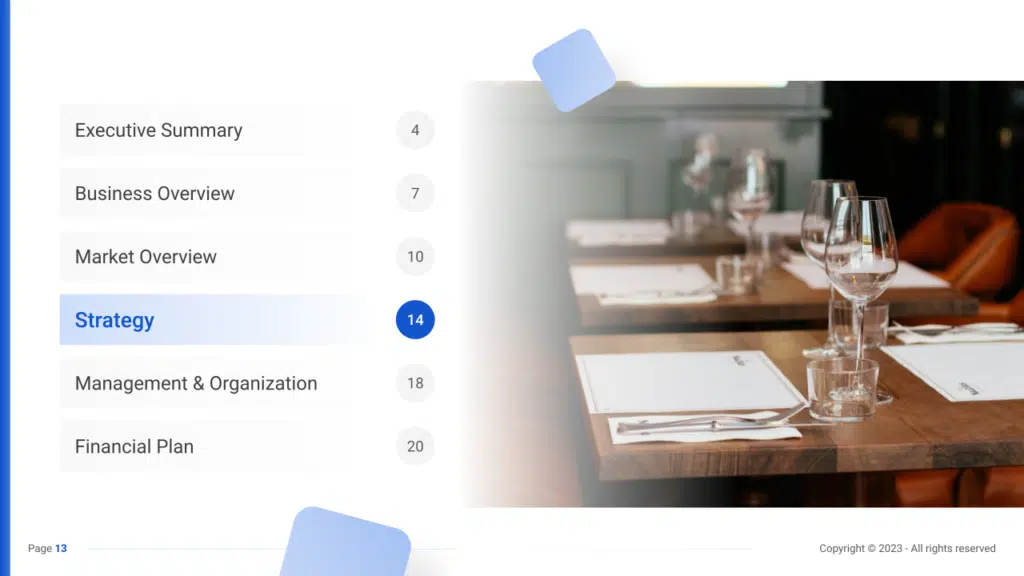
Dive deeper into SWOT
Dive deeper into Marketing Plan
The management section focuses on the restaurant’s management and their direct roles in daily operations and strategic direction. This part is crucial for understanding who is responsible for making key decisions and driving the restaurant towards its financial and operational goals.
For your restaurant business plan, list the core team members, their specific responsibilities, and how their expertise supports the business.
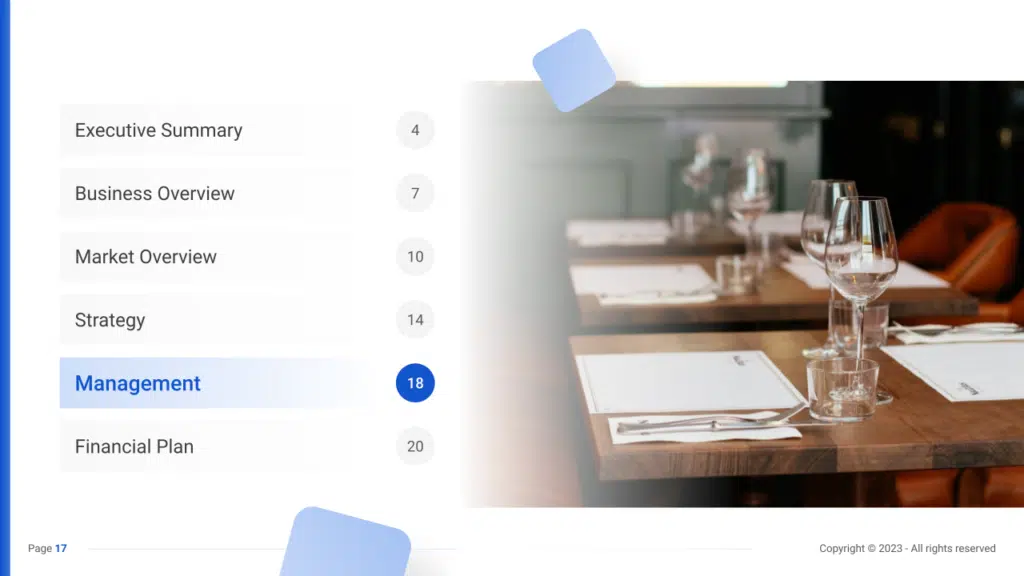
Financial Plan
The Financial Plan section is a comprehensive analysis of your financial projections for revenue, expenses, and profitability. It lays out your restaurant’s approach to securing funding, managing cash flow, and achieving breakeven.
This section typically includes detailed forecasts for the first 5 years of operation, highlighting expected revenue, operating costs and capital expenditures.
For your restaurant business plan, provide a snapshot of your financial statement (profit and loss, balance sheet, cash flow statement), as well as your key assumptions (e.g. number of customers and prices, expenses, etc.).
Make sure to cover here _ Profit and Loss _ Cash Flow Statement _ Balance Sheet _ Use of Funds
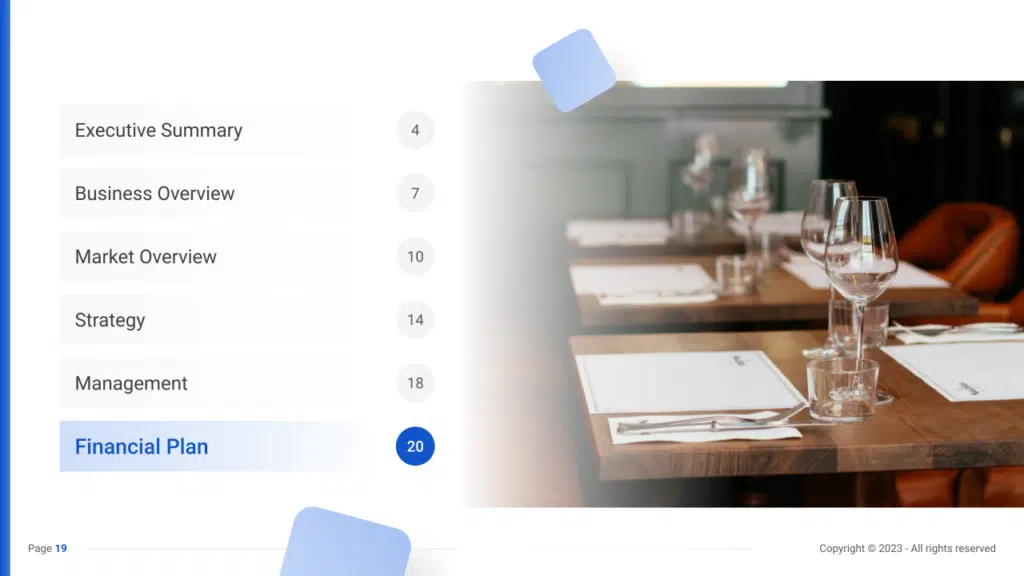
Privacy Overview
Restaurant Business Plan Template
Written by Dave Lavinsky
Restaurant Business Plan
You’ve come to the right place to create your restaurant business plan.
We have helped over 100,000 entrepreneurs and business owners with how to write a restaurant business plan to help them start or grow their restaurants.
Below is a restaurant business plan template to help you create each section of your business plan.
Restaurant Business Plan Example
Executive summary, business overview.
Bluehorn Restaurant & Steakhouse is a new restaurant and steakhouse located in Oklahoma City, Oklahoma. The menu of Bluehorn Restaurant & Steakhouse will include bistro-type dishes that are authentically created and crafted by acclaimed Chef Peter Logan. It will be located in the trendy part of town, known as the Plaza District. The restaurant will be surrounded by classy art galleries, live theater, high-end restaurants and bars, and expensive shopping.
Owned by emerging restaurant operators Chef Peter Logan and Anastasia Gillette, Bluehorn Restaurant & Steakhouse’s mission is to become Oklahoma City’s best, new restaurant for patrons to celebrate their next big event, have a nice date night, or gather with friends or family for a fun evening while dining over finely crafted entrees, desserts, and cocktails.
Products Served
The following are the menu items to be offered by Bluehorn Restaurant & Steakhouse:
- Soups & Salads
- Gourmet sides
- Wine, Beer & Spirits
Customer Focus
Bluehorn Restaurant & Steakhouse will target adult men and women between the ages of 21 – 65 with disposable income in Oklahoma City, Oklahoma. Within this demographic are millennials, young professionals, newlyweds, young families, more established families, and retirees. Because of the pricing structure of the menu, the patrons will likely be upper middle class to the wealthy population of Oklahoma City.
Management Team
Bluehorn Restaurant & Steakhouse is owned and operated by fellow Oklahoma City natives and culinary enthusiasts, Chef Peter Logan and Anastasia Gillette. Both come with a unique skill set and complement each other perfectly. They formerly worked together at another OKC fine dining establishment and made a great team for serving guests delectable food and wine while ensuring the highest level of customer service.
Chef Peter will manage the kitchen operations of Bluehorn Restaurant & Steakhouse, while Anastasia will oversee front of the house operations, maintain and ensure customer service, and manage all reservations.
Financial Highlights
Bluehorn Restaurant & Steakhouse is seeking $300,000 in debt financing to open its start-up restaurant. The funding will be dedicated for the build-out and design of the restaurant, kitchen, bar and lounge, as well as cooking supplies and equipment, working capital, three months worth of payroll expenses and opening inventory. The breakout of the funding is below:
- Restaurant Build-Out and Design – $100,000
- Kitchen supplies and equipment – $100,000
- Opening inventory – $25,000
- Working capital (to include 3 months of overhead expenses) – $25,000
- Marketing (advertising agency) – $25,000
- Accounting firm (3 months worth and establishment/permitting of business) – $25,000

Company Overview
Bluehorn Restaurant & Steakhouse is a new restaurant and steakhouse located in Oklahoma City, Oklahoma. Bluehorn Restaurant & Steakhouse will serve a wide variety of dishes and beverages and will cater to the upper middle class to wealthier population of Oklahoma City. The menu of Bluehorn Restaurant & Steakhouse will include bistro-type dishes that are authentically created and crafted by acclaimed Chef Peter Logan. It will be located in the trendy part of town, known as the Plaza District. The Plaza District is one of Oklahoma’s trendy neighborhoods and is considered the “it” area for newlyweds, millennials, professionals, and young singles. The restaurant will be surrounded by classy art galleries, live theater, high-end restaurants and bars, and expensive shopping.
Owned by emerging restaurant operators Chef Peter Logan and Anastasia Gillette, the restaurant’s mission statement is to become the best new steak restaurant in OKC. The following are the types of menu items Bluehorn Restaurant & Steakhouse will serve- shareables, steaks, soups, gourmet sides and salads.
Bluehorn Restaurant & Steakhouse History
Bluehorn Restaurant & Steakhouse is owned by two Oklahoma City natives, Chef Peter Logan and Anastasia Gillette. They have both worked around the country in fine dining establishments and have a combined twenty years in the restaurant industry. Upon working alongside each other at another fine dining establishment in Oklahoma City, the two of them became good friends and decided to venture into owning their own restaurant.
Chef Peter is the kitchen guru and critically acclaimed chef, while Anastasia manages the front of the house and is a certified Sommelier. Together, with both of their expertise and knowledge, Bluehorn Restaurant & Steakhouse is destined to become Oklahoma City’s next big restaurant.
Industry Analysis
The Restaurant industry is expected to grow to over $220 billion in the next five years.
Consumer spending is projected to grow. The Consumer Confidence Index, a leading indicator of spending patterns, is expected to also grow strongly, which will boost restaurant industry growth over the next five years. The growth in consumer confidence also suggests that more consumers may opt to segment their disposable income to eating outside the home.
Additionally, an increase in the number of households earning more than $100,000 annually further contributes to the industry growth, supporting industry operators that offer more niche, higher-end products. This group is expected to continue to grow in size over the next five years.
The urban population represents a large market for the industry. Specifically, time-strapped individuals living in urban areas will likely frequent industry establishments to save time on cooking. The urban population is expected to increase, representing a potential opportunity for the industry.
Customer Analysis
Demographic profile of target market, customer segmentation.
Bluehorn Restaurant & Steakhouse will primarily target the following customer profile:
- Upper middle class to wealthier population
- Millennials
- Young professionals
- Households with an average income of at least $75k
- Foodies and culture enthusiasts
Competitive Analysis
Direct and indirect competitors.
Bluehorn Restaurant & Steakhouse will be competing with other restaurants in Oklahoma City. A profile of each competitor is below. The Press Located in the trendy area known as the Plaza District, The Press has reimagined our favorite foods of the surrounding regions through the lens of home.
The menu consists of appetizers, soups, burgers and sandwiches, bowls, main dishes, sides, desserts, and a large selection of alcoholic beverages. The Press serves craft beer, domestic beer, wine spritzers, house cocktails, wine, and mimosas. They also offer brunch. The menu of The Press is affordable with the most expensive dish being $16. The wine menu is also not pretentious as the wine is sold either by the glass or bottle, with the most expensive bottle being $52 for the Gruet Sparkling Brut Rose. Oak & Ore Oak & Ore is a craft beer and restaurant in OKC’s Plaza District. They have a 36-tap beer selection and offer vegetarian, vegan, and gluten free dining options. Oak & Ore offers a rotating, 36-tap selection of their favorite brews from Oklahoma and around the world. Each beer is thoughtfully paired with a craft beer-inspired dining experience.
The food menu of Oak & Ore offers starters, salads, wings, fried chicken, sandwiches, tacos, banh mi, and sides. They also have a selection of kids dishes so the whole family can enjoy comfort food while sampling one of their delectable beers.
The Mule OKC The Mule is a casual, hip restaurant offering a large beer and cocktail menu plus sandwiches and more. Located in the constantly growing and buzzing hub that is the Plaza District, The Mule takes the timeless favorite and contorts it into a whole menu of wild offerings.
There is also a fantastic assortment of soups offered and The Mule shakes up a seasonal list of cocktails designed by their bar staff. During the winter months, patrons can stave off the cold with their versions of hot toddies and buttered rum. For the beer drinkers, they always have a reliable line-up of fresh cold brews on draft, as well as a wide selection of can.
Competitive Advantage
Bluehorn Restaurant & Steakhouse offers several advantages over its competition. Those advantages are:
- Gourmet dishes elegantly prepared to the finest standard.
- Selection of steaks sourced from local Oklahoma farms.
- An exclusive and unique wine menu that includes a wine selection of all price points.
- Highly sought after location: Bluehorn Restaurant & Steakhouse will be located in the trendy and attractive neighborhood known as The Plaza District.
- Trendy, welcoming, and energetic ambiance that will be perfect for a night out or a celebration.
Marketing Plan
Promotions strategy.
The marketing strategy for Bluehorn Restaurant & Steakhouse is as follows: Location Bluehorn Restaurant & Steakhouse’s location is a promotions strategy in itself. The Plaza District is a destination spot for locals, tourists, and anyone looking for the trendiest food fare in Oklahoma City. The Plaza District is home to OKC’s most popular bars and restaurants, art galleries, theaters, and boutique shopping. The millennials, young professionals, and foodies will frequent Bluehorn Restaurant & Steakhouse for the location itself.
Social Media Bluehorn Restaurant & Steakhouse will use social media to cater to the millennials and Oklahoma City residents. Chef Peter and Anastasia plan to hire an advertising agency to take professional photographs of the menu items and location to create appealing posts to reach a greater audience. The posts will include pictures of the menu items, as well as upcoming featured options. SEO Website Marketing Bluehorn Restaurant & Steakhouse plans to invest funds into maintaining a strong SEO presence on search engines like Google and Bing. When a person types in “local fine dining restaurant” or “Oklahoma City restaurant”, Bluehorn Restaurant & Steakhouse will appear in the top three choices. The website will include the full menu, location, hours, and lots of pictures of the food, drinks, and steaks. Third Party Delivery Sites Bluehorn Restaurant & Steakhouse will maintain a presence on sites like GrubHub, Uber Eats, Doordash, and Postmates so that people looking for local food to be delivered will see Bluehorn Restaurant & Steakhouse listed near the top.
Operations Plan
Operation functions:.
The company will hire the following:
- 4 sous chefs
- 2 bartenders
- 2 hostesses
- The company will hire an advertising agency and an accounting firm
Milestones:
Bluehorn Restaurant & Steakhouse aims to open in the next 6 months. The following are the milestones needed in order to obtain this goal.
7/1/202X – Execute lease for prime location in the Plaza District.
7/2/202X – Begin construction of restaurant build-out.
7/10/202X – Finalize menu.
7/17/202X – Hire advertising company to begin developing marketing efforts.
8/15/202X – Start of marketing campaign
8/22/202X – Final walk-thru of completed restaurant build-out.
8/25/202X – Hire team of sous chefs, servers, and bussers.
9/1/202X – Decoration and set up of restaurant.
9/15/202X – Grand Opening of Bluehorn Restaurant & Steakhouse
Bluehorn Restaurant & Steakhouse will be owned and operated by Chef Peter Logan and Anastasia Gillette. Each will have a 50% ownership stake in the restaurant.
Chef Peter Logan, Co-Owner
Chef Peter Logan is an Oklahoma City native and has been in the restaurant industry for over ten years. He was trained in a prestigious Le Cordon Bleu Culinary Academy in San Francisco and has worked in some of the nation’s most prestigious fine dining restaurants. His tenure has took him from the west coast to the east coast, and now he’s back doing what he loves in his hometown of Oklahoma City.
Chef Peter will manage the kitchen operations of Bluehorn Restaurant & Steakhouse. He will train and oversee the sous chefs, manage inventory, place food inventory orders, deal with the local food vendors, and ensure the highest customer satisfaction with the food.
Anastasia Gillette, Co-Owner
Anastasia Gillette was born and raised in Oklahoma City and has garnered over ten years in the restaurant industry as well. While in college, Anastasia worked as a hostess at one of the area’s most prestigious restaurant establishments. While there, she was eventually promoted to Front of the House Manager where she oversaw the hostesses, servers, bussers, bartenders, and reservations. Her passion always led to the beverage portion of the restaurant so she obtained her Sommelier certificate in 2019. With her wine education, Anastasia is able to cultivate an interesting and elegant wine selection for the restaurant.
Anastasia will oversee front of the house operations, maintain and ensure customer service, and manage all reservations. She will also be in charge of the bar and wine ordering, training of front of the house staff, and will manage the restaurant’s social media accounts once they are set up.
Financial Plan
Key revenue & costs.
The revenue drivers for Bluehorn Restaurant & Steakhouse will come from the food and drink menu items being offered daily.
The cost drivers will be the ingredients and products needed to make the menu items as well as the cooking materials. A significant cost driver is the fine dining equipment, serving dishes, and beer and wine glasses. Other cost drivers will be the overhead expenses of payroll for the employees, accounting firm, and cost of the advertising agency.
Funding Requirements and Use of Funds
Bluehorn Restaurant & Steakhouse is seeking $300,000 in debt financing to open its start-up restaurant. The breakout of the funding is below:
Financial Projections
Income Statement
Balance Sheet
Cash Flow Statement
Restaurant Business Plan FAQs
What is a restaurant business plan.
A restaurant business plan is a plan to start and/or grow your restaurant business. Among other things, it outlines your business concept, identifies your target customers, presents your marketing plan and details your financial projections.
You can easily complete your restaurant business plan using our Restaurant Business Plan Template here .
What Are the Main Types of Restaurants?
There are many types of restaurant businesses. Restaurants can range in type from fast food, fast casual, moderate casual, fine dining, and bar and restaurant types. Restaurants also come in a variety of different ethnic or themed categories, such as Mexican restaurants, Asian restaurants, American, etc. Some restaurants also go mobile and have food trucks.
How Do You Get Funding for Your Restaurant Business Plan?
Restaurant businesses are most likely to receive funding from banks. Typically you will find a local bank and present your business plan to them. Another option for a restaurant business is to obtain a small business loan. SBA loans are a popular option as they offer longer loan terms with lower interest rates.
What are the Steps To Start a Restaurant Business?
1. Develop A Restaurant Business Plan - The first step in starting a business is to create a detailed restaurant business plan that outlines all aspects of the venture. This should include potential market size and target customers, the services or products you will offer, pricing strategies and a detailed financial forecast.
2. Choose Your Legal Structure - It's important to select an appropriate legal entity for your restaurant business. This could be a limited liability company (LLC), corporation, partnership, or sole proprietorship. Each type has its own benefits and drawbacks so it’s important to do research and choose wisely so that your restaurant business is in compliance with local laws.
3. Register Your Restaurant Business - Once you have chosen a legal structure, the next step is to register your restaurant business with the government or state where you’re operating from. This includes obtaining licenses and permits as required by federal, state, and local laws.
4. Identify Financing Options - It’s likely that you’ll need some capital to start your restaurant business, so take some time to identify what financing options are available such as bank loans, investor funding, grants, or crowdfunding platforms.
5. Choose a Location - Whether you plan on operating out of a physical location or not, you should always have an idea of where you’ll be based should it become necessary in the future as well as what kind of space would be suitable for your operations.
6. Hire Employees - There are several ways to find qualified employees including job boards like LinkedIn or Indeed as well as hiring agencies if needed – depending on what type of employees you need it might also be more effective to reach out directly through networking events.
7. Acquire Necessary Restaurant Equipment & Supplies - In order to start your restaurant business, you'll need to purchase all of the necessary equipment and supplies to run a successful operation.
8. Market & Promote Your Business - Once you have all the necessary pieces in place, it’s time to start promoting and marketing your restaurant business. This includes creating a website, utilizing social media platforms like Facebook or Twitter, and having an effective Search Engine Optimization (SEO) strategy. You should also consider traditional marketing techniques such as radio or print advertising.
Learn more about how to start a successful restaurant business:
- How to Start a Restaurant Business
Where Can I Get a Restaurant Business Plan PDF?
You can download our free restaurant business plan template PDF here . This is a sample restaurant business plan template you can use in PDF format.

- Customer Reviews
- Net 30 Account
- Wise Services
- Steps & Timeline
- Work at a Glance
- Market Research at a Glance
- Business Plan Writing Services
- Bank Business Plan
- Investor Business Plan
- Franchise Business Plan
- Cannabis Business Plan
- Strategic Business Plan
- Corporate Business Plan
- Merge and Acquisition Business Plan (M&A)
- Private Placement Memorandums (PPM)
- Sample Business Plans
- Professional Feasibility Study
- PowerPoint Presentations
- Pitch Deck Presentation Services
- Business Plan Printing
- Market Research
- L-1 Business Plan
- E-2 Business Plan
- EB-5 Business Plan
- EB-5 Regional Centers
- Immigration Attorneys
- Nonprofit Business Plan
- Exit Business Planning
- Business Planning
- Business Formation
- Business License
- Business Website
- Business Branding
- Business Bank Account
- Digital Marketing
- Business Funding Resources
- Small Business Loans
- Venture Capital
- Net 30 Apply

Restaurant Business Plan Template
Getting your own restaurant business off the ground requires a business plan. here is a restaurant business plan template that includes the important elements you need to include in your business plan., fill the form to download business plan templates.
To ensure your restaurant business success in this highly competitive market, you need a properly structured business plan for your restaurant. With over 12 years of experience, we have helped over 5,000 entrepreneurs create business plans to start and grow their restaurant businesses.If this is your first time writing a business plan , we’ll walk you through these sections and give you some key things to consider.
Overview of Restaurants Industry
- Mexican restaurants
- Asian restaurants
- Seafood restaurants
- European restaurants
- US restaurants
- Pizza restaurants
- Steakhouses
In the three years up to 2021, the restaurant industry experienced revenue growth. Due to solid growth in the income levels of affluent consumers, the fine-dining segment performed particularly well over the past five years.
Consumer spending is likely to increase an annualized 2.5% over the three years to 2024.
As the Coronavirus subsides, industry revenues are expected to grow at a rate of 3.9% to $210.8 billion over the three years to 2024.

Key Success Factors for Restaurant Business
There are 6 factors that can help you boost profitability, efficiency, and ultimately success in the restaurant industry despite the challenges.
- Multi-skilled and flexible staff: To meet customer demand during peak periods, access to trained and qualified hourly workers is needed.
- Ability to adopt new technology quickly: In order to increase productivity and lower labor costs, owners should adopt new employee training as well as kitchen and customer-related technology.
- Present the product attractively: Atmosphere and ambiance of a restaurant play a key role in retaining and attracting customers.
- Close proximity to key markets: Having a location that is easy to access and close to target markets is important.
- Being able to control inventory: Reducing unnecessary expenses can be achieved by controlling orders, stock, and food waste, which are all major cost areas.
- Making sure pricing policy is appropriate: Owners must ensure that menu pricing/portion control is taken seriously in order to maintain profit and costs on meals.
What is a Restaurant Business Plan?
A business plan for the restaurant is a written document that sets your company’s financial goals and discusses how you’ll reach them.
A solid, comprehensive strategy will serve as a road map for the next three to five years of the restaurant business. Any bank or investor you approach will require a business plan for restaurant, so putting one together will be critical to securing funding.
In short, writing a business plan can help you succeed if you’re thinking of starting a restaurant business or pitching to investors or venture capitalists.
Free: Business Plan Examples
Do you need help creating a business plan? Check out these six free, proven business plan examples from different industries to help you write your own.
Why You Need a Restaurant Business Plan
If you want to start a restaurant business or expand an existing one, the first thing you need to do is to write a business plan. A business plan is also necessary for attracting investors who want to know if your restaurant is on the right track and worth investing in.
A solid, detailed plan gives you a clear path to follow, forces you to examine the viability of a restaurant business idea, and may help you better understand your company’s finances and competition.
Restaurant owners who have a business plan grow 37% faster than those who don’t, and 76% of fast-growing businesses have one.
A restaurant business plan is a living document that should be updated annually as your company grows and changes.
Funding Sources for Restaurant Businesses
Asking family and friends to invest in your restaurant business is a great way to start. Once you’ve set a budget and identified what you’ll need to start the store, take the services of your friends and family to help you get it off the ground. You might need to present the willing ones a solid business plan to reassure them that their chances of making a profit are good.
Bank loans and angel investors are the two most common sources of funding for a restaurant business. When it comes to bank loans, banks will want to look over your restaurant business plan to make sure you’ll be able to pay it back with interest.
The loan officer will not simply want to ensure that your financials are reasonable in order to gain this confidence. They will, however, expect to see a professional plan. They will be more confident in your ability to run a business successfully and professionally if you have a plan like this.
Looking to Build Credit for Your Restaurant Business ?
Build your business credit quickly with an easy approval net 30 account from Wise Business Plans. Or check out the top 10 net 30 vendors to find the best one for you to help build your business credit .
How to Write a Restaurant Business Plan
To write a restaurant business plan, you don’t need to be an expert. Our step-by-step guide will show you how to write a business plan for restaurant business, or you can just download our proven sample business plans to get a better idea.
Restaurant Business Plan PDF and Word
Download our restaurant business plan in PDF and Word here.
Executive Summary
The executive summary is the most important part of the document since it outlines the whole business plan. Despite the fact that it appears first in the plan, write the executive summary last so you may condense key concepts from the other nine parts.
It’s a part that catches the investor’s eye and provides key information about your company’s overview and upcoming short- and long-term goals.
Tell them what kind of restaurant business you have and what stage you’re in; for example, are you a startup, do you have a restaurant that you want to expand, or do you have a lot of restaurant business?
Finally, an executive summary should provide investors with a preview of what they may expect from the rest of your document.
- Provide a high-level overview of the restaurant business industry
- The name, location, and mission of your restaurant business
- A description of your restaurant business, including management, advisors, and a brief history
- Discuss the type of restaurant business you are operating, Give an overview of your target customers., and how your product differs from competitors in the industry
- Create a marketing plan that describes your company’s marketing strategies, sales, and partnership plans.
- And give an overview of your financial plan
Check out these executive summary examples to help you write a perfect one for your business plan.
Free: Executive Summary Examples
An executive summary is the most important part of your business plan, and it need not be challenging to write. This is why we have put together some awesome free Executive Summary examples for you.
Company Analysis
The company analysis follows the executive summary as the second section of a business plan. Your company overview will be short and clear, similar to the executive summary.
Even if they just have a few minutes, your reader has to understand what your company does and who your customers are.
The following sections will be included in your business plan’s Company Analysis:
- Company summary: Your company analysis will describe the type of restaurant business you are operating and its future goals. The type of restaurant you might be focused on are: (Fine Dining, Fast Casual, Restaurants with a Family Atmosphere, Restaurants That Serve Buffets, Cafeteria, Diner, etc.)
- Company history: When and why did you start your restaurant business?
- Management team: Who runs the company, and other key positions.
- What milestones have you achieved so far? Your milestones could include sales goals achieved, new store openings, etc.
- Legal structure and ownership: Your reader will want to know what business entity your company is: a sole proprietorship , LLC , partnership, or corporation .
- Locations and facilities: Information about your workspaces or plans to acquire them.
- Mission statement: An overview of your company’s guiding principles. Learn how to write a perfect mission statement .
Industry Analysis
You need to include an overview of the restaurant business in the industry analysis you performed before sitting down to write your restaurant business plan.
While this research may appear to be unnecessary, it helps you to build strategies that maximize business opportunities while lowering or avoiding the identified risk.
You may learn a lot about the restaurant industry by doing research. It helps you in understanding the market wherein you operate.
The third purpose for conducting market research is to demonstrate to readers that you are an industry expert.
Industry analysis can be presented as a 8-step process when written as part of a company’s business plan.
- Give a quick overview of the restaurant industry. Define the restaurant business in terms of size (in dollars), historical background, service region, and products.
- Examine previous trends and growth patterns in the restaurant industry.
- Identify the market’s major competitors.
- Age, gender, and general lifestyle of the targeted market
- Who are the market’s main suppliers?
- Determine the factors that have an impact on the restaurant industry. These might include government regulatory rules and other businesses’ competitive activities.
- Using research data, the industry forecast expected growth. Predictions should be made for both the long and short term.
- Describe how your restaurant business intends to position itself in the industry. Concentrate on how your restaurant business can benefit from opportunities highlighted in the industry.
Customer Analysis
The customer analysis section is an important part of any restaurant business plan since it evaluates the consumer segments that your company serves. It identifies target customers, determines what those customers want, and then explains how the product will meet those requirements.
Here are some examples of customer segments: Business executives, Couples, College students, techies, workers, etc.
Customer analysis may be divided into two parts: Psycho-social profiles (why your restaurant services and products suit a customer’s lifestyle) and Demographic profiles (descriptions of a customer’s demographic qualities).
In terms of demographics, you should include information on the ages, genders, locations, and income levels of the consumers you want to serve. Because most restaurant serves consumers who live in the same city or town, such demographic data is easily accessible on government websites.
The psychological profiles of your target clients reveal their wants and needs. The better you understand and identify these demands, the better your chances of attracting and retaining customers will be.
Competitor Analysis
It is necessary to do a competitor analysis. Not least because you may use their data to define your goals, marketing plans, tactics, new product lines, pricing, and more. Use competitor analysis to:
- Identify the strength and weaknesses of your restaurant competitors.
- Search for opportunities to distinguish your restaurant from competitors.
- Set your product’s price.
On the market, you will almost certainly discover some extremely powerful competitors, some of whom will be offering things similar to yours at unbelievably low costs. However, not every competitor works with low-cost, low-quality services.
The first step is to determine who your direct and indirect rivals are.
The direct competitors consist of other restaurant businesses that offer essentially the same products to the same people as you do.
Indirect competitors are more difficult to detect. They can sell a variety of cuisines or follow a different service model. However, because they serve the same target market, these businesses are competitors.
While indirect competitors may not serve the same meals, they compete for the same hungry customers. Restaurants, supermarkets, and customers preparing meals at home are all included.
Once you’ve identified the competitors, concentrate on the direct, head-to-head competitors, since they are the most threatening to your restaurant business — but keep an eye on the indirect competitors as well, just in case.
You will be able to position yourself competitively in the market if you perform proper competitors research. Perform a SWOT Analysis to learn your competitors’ strengths, weaknesses, and competitive advantages in the following areas:
- Prices – Are they cheaper or more costly than you and other restaurants, what value do buyers get for that price, and does shipping significantly raise the price?
- Quality – The quality services and products they provide, the perceived worth in the eyes of the customers
- Customer service – How they respond to their consumers, whether they treat them poorly or well, and the degrees of satisfaction customers show
- Reputation — The sum of everything mentioned above: their credibility, how loved the brand is, and the loyalty of their customers
The final section of your competitive analysis should include a list of your areas of competitive advantage. for example: Are you going to offer premium services and products? Will you offer unique services and products that your competitors don’t offer? Will you offer better pricing or will you offer greater customer support?
Consider how you will outperform your competitors and include them in this portion of your restaurant business plan.
Free: SWOT Analysis Examples
Take advantage of our free SWOT analysis examples. Make your business future-proof by identifying your strengths, weaknesses, opportunities, and threats using this free SWOT Analysis Template.
Marketing Plan
Creating a marketing plan for a restaurant business involves identifying the target demographic and finding products that suit their preferences. Restaurant owners need to constantly seek out restaurant businesses that their competitors do not carry.
As part of your marketing plan for a restaurant, you should include:
Pricing and Product Strategy
Your restaurant business must offer services and products that are unique, need in public, and different from those of your competitors. Research what your competitors carry and how they price their products. A unique restaurant collection identifies your store as the place to go for a unique restaurant business and differentiates it from others.
Placing and Promotions
The location of your restaurant business is referred to as place. Make a note of where you’re going and how it’ll affect your success. Your restaurant should be located somewhere with a lot of foot or car traffic to attract first-time customers. The more people who walk past your restaurant, the more likely you are to attract new customers.
Is your restaurant facility, for example, near a major highway or public transportation? Discuss how you can ensure a steady fl ow of customers at your location.
Promoting your restaurant is the final part of your marketing plan. In this step, you document how you will drive customers to purchase your restaurant. A few marketing methods you could consider are:
- Marketing in local newspapers and magazines
- Approaching bloggers and websites
- Free sample on holidays
- Pre-Opening events
- Billboards and Flyers
- Marketing on social media
- Marketing through websites
- Pay Per Click marketing
- Email Marketing
- Ongoing customer communications
- Keeping in touch with previous customers
Operations Plan
While the previous sections of your restaurant business plan described your goals, your operations plan discusses how you will achieve them.
An operations plan is helpful for investors, but it’s also helpful for you and employees because it pushes you to think about tactics and deadlines.
Your operations plan should be divided into two individual parts, as seen below.
All the daily tasks involved in running your restaurant business, such as serving customers, cleaning restaurant, procuring supplies, etc., are short-term processes.
Long-term goals are milestones that you aim to reach. These may include the dates when finalizing the lease agreement for the restaurant space or Reach break-evens. It might also be when you plan to launch a new restaurant business or to serve 1000th customer.
Management Team
When writing a business plan for restaurant, the management section’ outlines your management team, staff, resources, and how your business ownership is structured.
A strong management team is necessary to demonstrate your restaurant’s ability to succeed as a business. Highlight the backgrounds of your key players, emphasizing the skills and experiences that demonstrate their ability to grow a business.
You and/or your team members should ideally have prior experience working in a restaurant company. If so, emphasize your knowledge and experience. However, you should emphasize any experience that you believe will help your restaurant business succeed.
Consider forming an advisory board if your team is lacking. An advisory board would consist of 2 to 8 people who would act as mentors to your company. They would assist in answering questions and providing strategic direction. If necessary, seek out advisory board members with experience running restaurant and small businesses.
Financial Plan
As part of your financial plan, you should present a 5-year financial statement broken down monthly or quarterly for the first year, and then annually. Business financial statements include your income statement, balance sheet, and cash flow statement.
Income Statement
A profit and loss statement is more commonly called an income statement. It shows your revenue and subtracts your expenses to determine whether you were profitable or not.
As you develop your income statement, you need to develop assumptions. For example, will you serve 20 clients per day or 50? Will sales increase by 3% or 15% per year? As you can imagine, your assumptions have a significant impact on your financial forecast. Do your best to verify your assumptions by conducting research.
Free: Income Statement Template
Create a financial statement for your business by downloading our free income statement templates.
Balance Sheet
While balance sheets include much information, to simplify them to the key items you need to know about, balance sheets show your assets and liabilities.
The balance sheet shows your restaurant’s net value at a specific point in time. It categorizes all of your company’s financial data into three categories:
- Assets: Tangible goods with the monetary worth that the company owns.
- Liabilities: Debt owing to a company’s creditor.
- Equity: The net difference when the total liabilities are subtracted from the total assets.
The equation that expresses the relationship between these financial data elements is Assets = Liabilities + Equity.
Create a pro forma balance sheet for your restaurant business plan that highlights the information in the income statement and cash flow projections. A balance sheet is normally prepared once a year by a company.
Balance sheets indicate your assets and liabilities, and while they contain a lot of information, they are simplified to highlight the most important things you need to know.
For example, spending $150,000 to build out your restaurant business will not result in instant revenues. Rather, it is an asset that should help you earn money for many years to come.
Similarly, if a bank sends you a check for $700,000, you do not have to pay it back right now. Rather, that is a liability that you will repay over time.
Free: Balance Sheet Template
Create a financial statement for your business by downloading our free balance sheet templates.
List any additional material you cannot include elsewhere, such as resumes from key employees, licenses, equipment leases, permits, patents, receipts, bank statements, contracts, and personal and business credit histories.
Attach your full financial projections along with any supporting documents that make your plan more compelling in the appendix. You may, for instance, include some of your apparel designs.
Bonus Tip: Learn what to include in a business plan appendix when writing a business plan.
Summary of the Restaurant Business Plan
A business plan for restaurant is a worthwhile investment. As long as you follow the template above, you will become an expert in no time. By following the template, you will understand the restaurant business, your competitors, and your customers. The plan will help you understand the steps necessary to launch and grow your restaurant business.
Do you want to Finish Your Restaurant Business Plan in less the one day?
Wouldn’t it be nice if your business plan could be completed faster and easier?
With wise business plans Business Plan Template , you can finish your plan in just 6 hours or less with a 30-Day Money-Back Guarantee!
In addition, you can download our 300+ free business plan templates covering a range of industries.
OR, we can develop your restaurant business plan for you
Since 2010, Wise business plans’ MBA professional business plan writers has developed business plans for thousands of companies that have experienced tremendous success.
Download Our Restaurant Business Plan Template
We will show you some real-world business plan examples so you may know how to write your own, especially if you are seeking a bank loan or an outside investment and need to use SBA-approved formatting.
Get in Touch
Contact us today for a free consultation, quick links.

- Investor Business Plans
- M&A Business Plan
- Private Placement
- Feasibility Study
- Hire a Business Plan Writer
- Business Valuation Calculator
- Business Plan Examples
- Real Estate Business Plan
- Business Plan Template
- Business Plan Pricing Guide
- Business Plan Makeover
- SBA Loans, Bank Funding & Business Credit
- Finding & Qualifying for Business Grants
- Leadership for the New Manager
- Content Marketing for Beginners
- All About Crowdfunding
- EB-5 Regional Centers, A Step-By-Step Guide
- Logo Designer
- Landing Page
- PPC Advertising

- Business Entity
- Business Licensing
- Virtual Assistant
- Business Phone
- Business Address
- E-1 Visa Business Plan
- EB1-A Visa Business Plan
- EB1-C Visa Business Plan
- EB2-NIW Business Plan
- H1B Visa Business Plan
- O1 Visa Business Plan
- Business Brokers
- Merger & Acquisition Advisors
- Franchisors
Proud Sponsor of
- 1-800-496-1056

- (613) 800-0227

- +44 (1549) 409190

- +61 (2) 72510077

- Skip to primary navigation
- Skip to main content
- Skip to primary sidebar
- Skip to footer
Legal Templates
Home Business Business Plan Restaurant Business Plan
Restaurant Business Plan Template
Download our template and start creating your restaurant business plan.
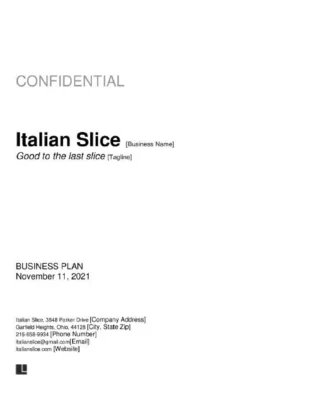
Updated September 22, 2023 Reviewed by Brooke Davis
Your restaurant business plan is an outline of your future success. A well-formulated plan helps put the big picture together no matter how good your restaurant ideas are.
A business plan helps prove the viability of your thoughts and can provide investors with the information they need to sign on to your project. Investors need to know how you will run your restaurant in a competitive market and how you will overcome any challenges.
Your business plan lets you provide a framework for yourself and others to get your restaurant off the ground. Lack of preparation and a proper plan is one of the leading reasons new restaurants fail within their first year.
Learn how to write a restaurant business plan and avoid many common pitfalls of new business owners. Legal Templates has a free restaurant business plan template to help you get started.
Why You Need a Business Plan for Your Restaurant Business
How to write a business plan for a restaurant, restaurant business plan example.
Too many new restaurant owners fail to put together a business plan. You may think you don’t need one because you know what you want to do. Without a proper business plan, however, you’re moving into a difficult process without a strong framework for success.
When you want people to invest in your business, you need to be able to demonstrate future success. A concrete and carefully detailed business plan is a must. A well-crafted plan increases the likelihood that you will secure investors.
A business plan aims to help you achieve your goals at each stage of your business development and operation. The program will cover operational details, regulatory compliance, hiring practices, and other essential details.
A business plan can also help you turn your vision into tangible goals others can see. With this in a detailed plan, you will be more likely to create a successful and long-lasting restaurant.

Many people don’t know how to start a restaurant business plan without help. A good plan hits the essential details and outlines your vision for the restaurant’s future. However, you don’t have to do this from scratch. A restaurant business plan example can help you get started and know what to include in your plan.
1. Executive Summary
An executive summary is a brief overview of your company. It will outline why the community wants your food and needs your restaurant. This summary section will focus on your intended reader, whether that person is yourself or a potential investor.
An executive summary is a place for brief details rather than an in-depth and fact-heavy outline. Many people consider this the essential part of the plan, as it will outline why the restaurant will succeed.
The executive summary is your chance to capture the reader’s attention. Many people will decide whether to keep reading your plan, so getting off on the right foot is essential. Your executive summary will include information like:
- How will your restaurant be competitive
- The type of food you will serve and a menu
- The target demographics for the restaurant
- An implementation plan
- Outline of competition you will face
- Who the owners and staff will be
- The organizational structure of your restaurant
- Marketing and sales strategies
Many of these details will receive an in-depth treatment later in your plan. They should provide just the key points you want to make to summarize the rest of your business plan.
2. Management Team
Your restaurant business plan should include a section that presents your management team. Here, you detail the responsibilities of each owner, manager, and staff member. You lay out expectations for who will do what in getting the business started. These details also help show investors you are serious and know how to handle the day-to-day operation of a restaurant business.
The management team section should include essential details about the ownership of the restaurant, including:
- Legal names of each owner
- How the restaurant will be legally structured (corporation, limited liability company (LLC), etc.)
- Types of Ownership
- Percentage of ownership for each owner
- Ownership agreement among the parties
Your business plan should also include details about those running the restaurant daily. While there may be some overlap — especially in small restaurants — management responsibilities should be clearly outlined. This information should include the following:
- Full names of any management team member
- Education and background
- Past restaurant or management experience
- Title and summary of job responsibilities
- Any food industry training
- Salary and benefits information
3. Products and Services
Investors want to know what you will be serving and how you know customers will like it. This is where you can get specific and show why people flock to your restaurant. A robust opening menu shows you are prepared and know how to attract potential customers. The products and services section will include your sample menu and any other services your restaurant will provide.
This section should also address other questions about how you will handle your products:
- How will you order the necessary supplies?
- What are the costs of products and the sales price?
- How will you measure sales success?
- Why will customers choose your food over competitors’?
- How will your menu change over time?
Too many new restaurant owners have a great vision and food but don’t know how to execute a successful business. Investors want to know that your food will be good and that you fully understand how to run a restaurant. A restaurant business plan template can help you create a successful plan.
4. Customers and Marketing
You need to know who your customers are going to be. Any successful restaurant understands its key demographics and how it will market its business to these potential customers. Your business plan must outline important information about your customers and provide detailed data about the availability of these customers in your area.
Market research is often helpful in demonstrating that the type of customer you are looking for is readily available in your local marketplace. Supporting information must be available here to show investors you have customers to keep your restaurant long-term.
Marketing strategies and an ongoing plan are essential to the success of a new business — especially a restaurant. It would be best to show how you would make people aware of your new restaurant and engage customers in the future. Your restaurant business plan can include marketing details such as:
- Where will your restaurant be located?
- Will you offer delivery, and what is the range?
- Will you advertise on social media, your website, or other digital marketing?
- Will you use billboards, flyers, or other complex media advertising?
- What is your advertising budget?
These crucial details demonstrate you have a real plan for your restaurant’s success.
5. SWOT Analysis
A SWOT analysis for your new restaurant will focus on four key areas:
- Opportunities
A SWOT analysis addresses difficult questions in an easy-to-read format. It is a business tool that helps to analyze how your restaurant will perform against your competition. It will look at internal and external factors that may help or hurt your future business.
This data is based on real-world facts rather than ideal conditions or best hopes.
6. Financials
The financials section details the key areas of financial performance for your business. This includes information about start-up costs and break-even points. It also shows how and when the company can profit and see a return on investment.
The financial section should include the following:
- Monthly expenses — supplies, payroll, rent, etc.
- Price points for all products
- Projected revenue
- Mathematical projections for the restaurant
- Variable costs of the business
- Financial records and cash flow statements
7. Operations
Your restaurant business plan must address how your restaurant will run. While this includes details about products and services, it will also cover other critical operational details such as:
- Employment requirements
- Business hours
- Licensing and food inspection requirements
- Cleaning procedures
- Restaurant design
- Mission statement
- Restaurant location
Investors want to see precisely how you will run your business and how you will do it successfully. People often hesitate to invest in a restaurant, as many eateries fail within the first year.
However, a strong business plan showing you understand your specific operational issues will go a long way to alleviate these concerns and get you started on the right foot.
8. Appendix
The appendix section allows you to include other valuable documents and information at the end of the business plan. This may be information that does not fit well into different sections or is supporting documentation for the information in the primary areas. An appendix might include, but is not limited to:
- Letters of reference
- Legal permits and licensing
- Customer reviews of food and services
- Pictures of people enjoying your food
- Restaurant design sketches
- Photos of a proposed restaurant location
- Market research
The appendix lets you end on a good note. You can provide additional information to bolster the rest of your business plan.
Your restaurant business plan should be comprehensive and easy to understand. The prospect of putting one together can feel daunting without some help. A restaurant business plan sample can help you start and tell you what to include.
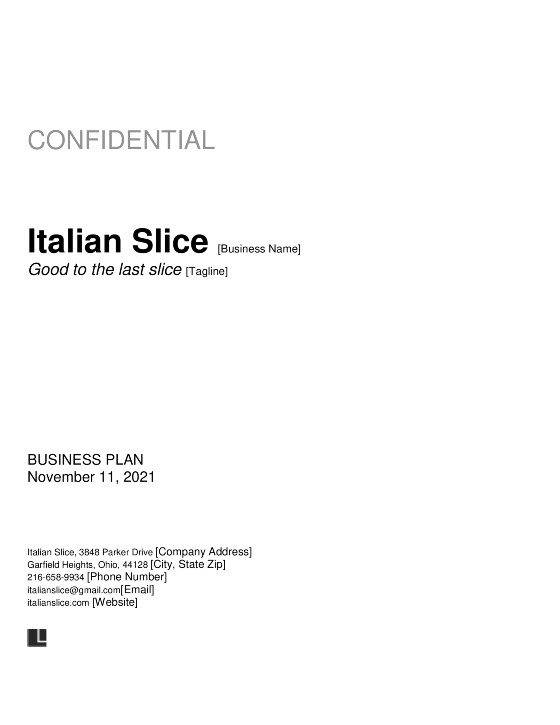
- Legal Resources
- Partner With Us
- Terms of Use
- Privacy Policy
- Do Not Sell My Personal Information
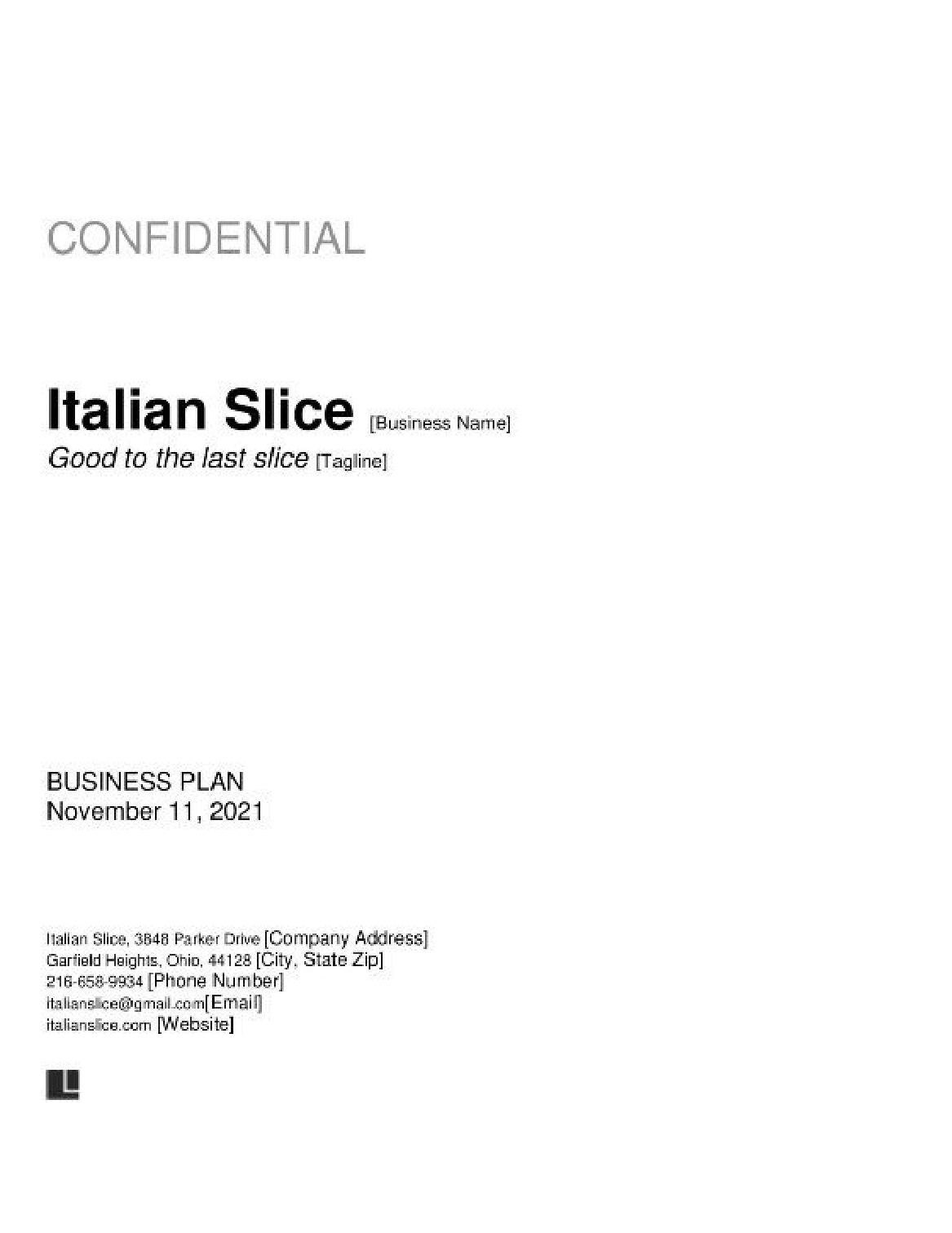
The document above is a sample. Please note that the language you see here may change depending on your answers to the document questionnaire.
Thank you for downloading!
How would you rate your free template?
Click on a star to rate

Item added to your cart
How to write a business plan for your restaurant.

Starting a restaurant can be a great way to make a living while also providing a valuable service to the community.
It can also be a great way to express creativity, as a restaurant provides an opportunity to create unique dishes and experiences for customers.
Nevertheless, the first step is to develop a business plan.
A business plan is essential before starting a new project such as a restaurant. It should include a detailed description of the business, a marketing plan, and a financial plan. A business plan helps ensure that the project is well-planned and organized, and will help set the project up for success.
In short, a thorough business plan will help make sure your restaurant is profitable .
What should be covered when creating a business plan for a restaurant? How can it be presented clearly? What financial metrics should be included? How can I develop an efficient business plan in less time?
Exciting news! The forthcoming article holds all the answers to these questions!
Also, please note that starting your business plan from scratch is not mandatory.
Instead, you can download our professional business plan for a restaurant and tailor it to suit your requirements.

How to develop a business plan for a restaurant
Is a business plan recommended for your restaurant.
Yes, you should create a business plan for your restaurant.
Formulating a comprehensive business plan will allow to:
- get familiar with the restaurant market
- keep up with the industry's changing trends
- establish what makes a restaurant competitive
- understand what your consumers want to eat
- come up with a great value proposition for your dining establishment
- identify competitive advantages and disadvantages
- find distinctive competitive edges for your restaurant
- find a business model that ensures a sustainable profit margin
- formulate an effective strategy to drive business growth
- evaluate potential risks associated with operating a restaurant, such as foodborne illnesses, customer satisfaction, and staff turnover
Our team has drafted a business plan for a restaurant that is designed to make it easier for you to achieve all the elements listed.
How to organize a business plan for a restaurant?
A meticulously written business plan provides all the necessary information, numbers, and financial details. It must be presented in a structured format, to make easy to read and digest.
When we built our business plan for a restaurant , we made sure to set it up correctly.
We've divided it into 5 sections (Opportunity, Project, Market Research, Strategy and Finances).
1. Market Opportunity
The section number one is designated as "Market Opportunity."
This section presents a comprehensive report on the restaurant industry, including key data and metrics to guide your decision-making process in the food service sector.
We renew this section twice a year for up-to-date data.

2. Project Presentation
The "Project" section allows you to present your pottery studio project, including the available pottery techniques, studio layout, classes offered, and highlight the unique value proposition for pottery enthusiasts.
At the end of this section, provide a brief introduction about yourself and your culinary journey.
Explain your culinary style, your commitment to using quality ingredients, and how you plan to create a memorable dining experience for guests at your restaurant. Highlight your menu offerings, your skilled kitchen and waitstaff, and your dedication to providing exceptional customer service that ensures guests have a delightful and satisfying culinary experience at your restaurant.
In our business plan, you'll find that we've given you pre-existing content. Modify it to match your idea exactly.
3. Market Research
After that, comes the "Market Research" section.
The purpose of this section is to introduce the market segments for your restaurant.
It includes a competition study, outlining similar restaurants in the area. Your restaurant's competitive advantages are also highlighted. A customized SWOT analysis is included.
4. Strategy
Within the "Strategy" section, a 3-year development plan is outlined, specifying the necessary initiatives to make your restaurant highly profitable.
Moreover, you will find a marketing strategy, a risk management approach, and a Business Model Canvas specifically designed for a restaurant in this section.
5. Finances
Lastly, the "Finances" section is dedicated to illustrating the financial plan and data for your project.

How to make an Executive Summary for a restaurant?
The Executive Summary can be seen as a condensed overview of the business plan for your restaurant.
Keep it brief and focused, with a maximum of 2 pages. Include only the key elements.
It's the first thing an investor will read when you share your business plan with them. It should catch their interest and make them want to read the rest of the plan.
In the Executive Summary of your restaurant, provide answers to these questions: what type of cuisine does your restaurant offer? who is your target audience? are there other restaurants in the area? what makes your restaurant special? how much funding do you require?
How to do the market analysis for a restaurant?
Analyzing the market for your restaurant allows you to gain insights into factors such as customer preferences for dining experiences, competition within the food service industry, and emerging trends in culinary innovation.
By conducting a comprehensive market analysis, a restaurant can understand customer preferences, offer a diverse and delicious menu, optimize pricing strategies, and execute targeted marketing campaigns, ultimately leading to a loyal customer base, increased reservations, and a prominent position in the local dining scene.
Here's what we've included in the "Market Research" section of our business plan for a restaurant :
- recent data and statistics about the restaurant industry, including customer dining preferences, revenue trends, and popular cuisine choices
- a list of potential market segments for a restaurant
- the competitor study
- the potential competitive advantages for a restaurant

The key points of the business plan for a restaurant
What's the business model of a restaurant, business model of a restaurant.
A restaurant's business model centers around offering a menu of food and beverages for dine-in, takeout, or delivery services. Revenue is generated through food sales, potentially offering additional services such as catering or private events.
The business model focuses on creating a diverse and appealing menu, delivering excellent food quality and taste, providing exceptional customer service, effective marketing to target food lovers, and building strong customer relationships based on taste and dining experience.
Success depends on recipe innovation, maintaining consistent food quality, delivering efficient service, fostering positive customer reviews and recommendations, and creating a welcoming and comfortable restaurant ambiance that attracts a loyal customer base.
Business model vs Business plan
Don't get "business plan" and "business model" mixed up.
A business model outlines the way a company creates value, generates revenue, and operates.
In a business plan, you demonstrate your business model using a structure called the Business Model Canvas.
And, of course, there is a Business Model Canvas (already completed) in our business plan for a restaurant .
How do you identify the market segments of a restaurant?
Market segmentation for your recruitment agency business involves dividing your potential clients into different groups based on their hiring needs, industries, and preferences.
These categories may include factors such as IT recruitment, healthcare recruitment, executive search, or clients seeking specific recruitment services (e.g., temporary staffing, talent acquisition, niche specialization).
By segmenting your market, you can offer specialized recruitment services and solutions that cater to each segment's specific requirements. For example, you might focus on IT recruitment and provide sourcing and placement services for tech companies or startups, offer comprehensive healthcare recruitment services and assist hospitals, clinics, or healthcare organizations in finding qualified medical professionals, specialize in executive search and help businesses identify top-tier executive talent, or focus on specific recruitment services such as temporary staffing for companies in need of short-term staffing solutions or niche specialization to serve a specific industry or job market.
Market segmentation allows you to effectively target your marketing efforts, communicate your expertise in specific industries or recruitment services, and provide reliable and efficient recruitment solutions that meet the unique needs and preferences of each client segment.
In the business plan for a restaurant , you will find a comprehensive market segmentation that will help you identify your potential customers.
How to conduct a competitor analysis for a restaurant?
It's clear that you won't be the only restaurant in your city. There are other dining establishments offering diverse cuisines and culinary experiences to patrons.
Make sure to thoroughly analyze your competitors as part of your business plan by listing their attributes, strengths, and weaknesses.
Address their weaknesses (such as inconsistent food quality, slow service, or poor cleanliness).
Why is it important to address these concerns? Because these weaknesses can impact the dining experience at restaurants.
By focusing on these areas, you can provide a diverse and delicious menu, offer excellent customer service, and create an inviting and memorable ambiance, establishing your restaurant as a go-to choice for dining out and enjoying great food.
It's what we call competitive advantages—invest in them to make your business unique.
Here are some examples of competitive advantages for a restaurant: delectable and diverse menu offerings, exceptional culinary skills, inviting and stylish ambiance, efficient service, outstanding customer reviews and reputation, excellent hygiene and cleanliness, accommodating for special dietary needs or preferences.
How to draft a SWOT analysis for an eatery?
A SWOT analysis can help identify strengths, weaknesses, opportunities, and threats associated with starting a restaurant, allowing for informed decision-making.
As you can guess, there is indeed a completed and editable SWOT matrix in our business plan for a restaurant
The strengths for a restaurant
When we use the "S" in SWOT, we're talking about Strengths, which are the project's strong points.
For a restaurant, possible strengths could include friendly staff, great food, a good atmosphere, and competitive prices.
The weaknesses for a restaurant
The "W" represents Weaknesses, indicating the areas or aspects of the project that need enhancement.
For a restaurant, potential weaknesses could include a lack of online presence, insufficient staffing, limited menu options, and inadequate customer service.
The opportunities for a restaurant
When we use the "O" in SWOT, we're talking about Opportunities, which are the external possibilities or favorable situations for the project.
In the case of a restaurant, potential opportunities include expanding the catering business, introducing new menu items, developing a loyalty program, and offering delivery services.
The threats for a restaurant
T represents Threats, which are the external factors or circumstances that can pose risks or hindrances to the project's progress.
How to elaborate a marketing strategy for an eatery?
A marketing strategy is a key factor in acquiring customers and increasing revenue, so include it in your business plan.
Developing an effective marketing approach will help your restaurant connect with food enthusiasts seeking a unique and delectable dining experience.
Diners won't choose your restaurant without effective promotion; emphasizing the culinary experience, ambiance, and unique offerings is necessary.
Have you explored marketing approaches to attract customers to your restaurant? Consider creating mouthwatering food photography for social media, hosting themed events or special menus, and collaborating with food bloggers or influencers for reviews.
Don't panic if you lack knowledge about marketing and communication – there are resources to help you learn.
How to build a solid financial plan for an eatery?
A successful business plan requires comprehensive financial data in order to accurately forecast future performance.
In your business plan, you will have to make revenue projections for your restaurant.
We must ensure that this revenue forecast is reasonable and easily comprehensible.
Our financial plan for a restaurant is user-friendly, providing automated validations that allow you to rectify any assumptions swiftly. This guarantees the creation of credible projections with ease and assurance.
Naturally, you'll have to prepare an initial budget for your restaurant. Don't forget any expense (we have listed them all in our financial plan !).
The break-even analysis is a crucial tool in your financial plan, providing insight into whether your restaurant will be profitable or not.
- Choosing a selection results in a full page refresh.
- Opens in a new window.
How to Write a Small Restaurant Business Plan + Free Sample Plan PDF

Makenna Crocker
10 min. read
Updated March 18, 2024
Free Download: Sample Restaurant Business Plan Template
From greasy spoon diners to Michelin Star restaurants, food service has captured the hearts and imaginations of countless culinary entrepreneurs.
In the United States, 90% of restaurant owners operate small restaurants with fewer than 50 employees . And 70% operate in just one location.
If you’re passionate about food and dream of opening a restaurant, you have plenty of company. But cooking skills alone won’t cut it. You need a plan.
In this article, we’ll walk you through writing a small restaurant business plan, from conducting market research to developing promotional strategies and creating a financial forecast.
Need more guidance? Download our free small restaurant business plan template .
Why write a small restaurant business plan?
Starting a restaurant from scratch isn’t cheap. Startup costs range from $175,000 to $750,000 and include hefty upfront expenses like:
- Building lease
- Kitchen equipment
- Ingredient sourcing
The financials section of a business plan gives you space to compile these costs into an expense budget and compare them to your revenue projections . These will be invaluable in helping you determine if your restaurant concept is financially viable.
And if you need a bank loan or investor to help fund your restaurant , they’ll want to see a plan that includes financial projections (more on that later).
Brought to you by
Create a professional business plan
Using ai and step-by-step instructions.
Secure funding
Validate ideas
Build a strategy
- How to write a small restaurant business plan
The business plan is not only where you lay out your plan, vision, and goals for the restaurant – it pushes you to thoroughly research and understand your market , competitors , and customers to make informed decisions. It guides you through the intricacies of opening and running a small restaurant and helps you keep your finances in order.
Here are some tips for writing a small restaurant business plan that sets you up for success.
- Start with a company overview
A good place to start is to think about the big picture. What do you want your restaurant to be? Are you envisioning upscale dining in a candlelit, intimate setting? Or maybe you’re going for comfort food in a family-friendly atmosphere?
Capture the essence of your restaurant with a brief, attention-grabbing overview. Think of the start of your overview section as an elevator pitch. You’re introducing your concept and vision to highlight what will make your business unique .
Just keep it succinct.
You’ll need to include other important information about your business here, such as the legal structure of your business and the qualifications of you and your management team.
If you’re writing a business for an existing restaurant, you should also cover its history – when the restaurant was founded, who was involved, and milestones it has reached.
- Understand your target market
Conducting a thorough market analysis is key to the success of your small restaurant. In an industry as competitive as the restaurant business, you’ll need to have your finger on the pulse of your dining market if you hope to create a unique offering.
Defining your target market is essential when starting your restaurant, helping answer questions like:
- Is there demand in the local market for your food?
- Who are your primary competitors?
- Is there building space for lease near where your target customers live or work?
- What types of partnerships with food distributors (wholesalers, farmers, butchers, etc.) will be needed to ensure a steady flow of fresh ingredients?
The first step is to identify who your diners will be.
It’s unrealistic to try to appeal to every single customer. So, ask yourself who you envision walking through your doors. Are they:
- Adults aged 40 and over, with lots of disposable income and exotic culinary tastes.
- Children, young adults, and families looking for quick, convenient food that doesn’t stretch their budgets.
Of course, these aren’t the only two customer demographics for a restaurant. But you should get the sense that these customer segments have very different preferences.
Read more: Target market example
Understanding your target market involves more than just demographics. Consider their:
- Spending habits
- Daily routines
If you plan to operate in a busy city center, your target market might include working professionals seeking quick lunch options or upscale dining options after work. But if you’re opening in a less visible area near residential neighborhoods, you may be more likely to target families.
- Size up your competition
With a target customer in mind, you need to understand who you’ll be competing with for their dining budget.
Analyzing your competitors is about understanding their strengths, weaknesses, and strategies.
Start by identifying direct competitors (other small restaurants) and indirect competitors (like fast-food chains or food trucks). Observe how they attract customers, the ambiance they create, and the variety and pricing of their menus.
Get a feel for their operational strategies:
- How much staffing do they have?
- How fast (or slow) is their service?
- What kinds of supplier relationships do they seem to have?
And their marketing tactics :
- How do they engage with customers?
- What deals or promotions do they offer?
- What kind of reviews are they getting online?
Finally, think about their long-term position:
- Have they expanded or downsized recently?
- Have they changed their operating hours?
- Have they changed their menu?
As you observe these competitors and their customers, ask yourself what they are doing right and where they are coming up short.
This knowledge will help you identify gaps in the market and opportunities to offer a unique experience.
- Create a detailed operations plan
With so many moving pieces to manage as a restaurant owner, writing an operations plan is just as important as creating a market analysis.
The operations section of your business plan details how your restaurant will function daily.
It should briefly touch on every aspect of running the business–from staffing needs to how often you will need to buy new ingredients, kitchen equipment, or dining utensils.
Your operations plan will reflect the unique needs of your business, but a typical restaurant operations plan might include:
- Staffing and training: Lay out a staffing plan, with the roles and responsibilities of each team member. Include strategies for hiring, training, and employee retention.
- Equipment and technology: Outline your dining, kitchen, and technology needs, from tables and chairs to ovens and point-of-sale systems.
- Supply chain management: Explain your ingredient sourcing and inventory management strategies and your plan to build relationships with suppliers.
- Customer service policies: Describe how you manage customer service needs and feedback to ensure a positive dining experience.
- Health and safety protocols: Detail procedures for maintaining kitchen hygiene practices and food handling standards to ensure food safety and compliance with health regulations.
Without an operations plan, you’ll lack a documented strategy for managing your kitchen workflow, maintaining customer satisfaction, or even basic tasks like inventory or staffing.
And if you’re writing a business plan to get a bank loan or investment , they’ll want to see that you have a plan for successfully managing the restaurant.
- Actively market your restaurant
Your small restaurant may serve the most mouthwatering dishes in town, but no one will discover it without effective promotional strategies.
You need to develop a comprehensive marketing plan to showcase your culinary delights and entice customers through your doors.
Consider both traditional and digital marketing channels to reach your target audience. Traditional methods may include:
- Hosting special events
- Participating in local food festivals
- Partnering with complementary businesses in your community
Digital strategies may include:
- Creating an engaging website
- Building a strong presence on social media platforms
- Utilizing online review platforms to build credibility and foster positive word-of-mouth.
When developing your promotional strategies, consider the following tips:
Be smart about your online presence
Build a visually appealing and user-friendly website that showcases your restaurant’s ambiance, menu, and story.
Leverage social media platforms to engage with your audience, share enticing food photos, and run targeted advertising campaigns.
Consider promotions
Encourage repeat business by implementing a loyalty program that rewards customers for their patronage. Offer incentives such as discounts to certain customer segments, like seniors, veterans, or students.
Engage with the local community
Participate in community events, sponsor local sports teams or charity initiatives, and establish partnerships with neighboring businesses.
Becoming an active community member will build brand awareness and loyalty.
Don’t ignore your pricing and financial strategy
According to data from the National Restaurant Association , about 60% of restaurants fail in their first year, and 80% close within five years.
You need to understand your startup and ongoing operating expenses to run a successful small restaurant.
Start by estimating your startup costs , including:
- Site acquisition (down payment if owning the space, initial payment if leasing)
- Building improvements
- Equipment purchases
- Licenses and permits
- Initial inventory
- Menu creation
Then, account for ongoing operating expenses, such as:
- Employee wages
- Mortgage or rent payments
- Ingredient costs
Pricing your menu items strategically is essential to ensuring profitability. Analyze ingredient costs, consider portion sizes, and compare prices in your local market to determine competitive yet profitable pricing.
Conduct a break-even analysis to determine the number of customers you need to serve to cover costs and start generating profits. Regularly review your financials and adjust your pricing as needed to maintain a healthy bottom line.
Consider these financial aspects when developing your small restaurant business plan:
Budget Allocation
Determine how you will allocate your budget across different areas of your restaurant, such as kitchen equipment, interior design, marketing, and staff training.
Prioritize investments that will have a direct impact on customer experience and operational efficiency.
Revenue Streams
Identify multiple revenue streams for your restaurant. This may include revenue from food sales, catering services, private events, or partnerships with local businesses.
Diversifying your revenue sources can help stabilize your cash flow.
Cost Control
Develop strategies to control costs without compromising quality. Efficient inventory management, negotiation with suppliers, and staff training on waste reduction can contribute to cost savings.
Sales Forecasting
Create a sales forecast based on your market research, pricing strategy, and seating capacity. Consider seasonal fluctuations and special events that may impact your restaurant’s performance.
Other information to include in your small restaurant business plan
As a restaurant owner, a few components of your business plan are unique to your industry.
None of these fit neatly into any one section of a business plan. We suggest addressing them in additional sections or within the appendix .
Restaurant location and layout
Include information about your restaurant’s location .
Some of this information will be included in your market analysis, but once you’ve secured a location, you should go deeper and analyze factors like:
- Rent and utilities
- Foot traffic
- Parking availability
- Nearby businesses
Explaining the layout of your restaurant – especially your kitchen – is also important. Consider adding photos or diagrams of each room to your plan.
Diagrams can be especially helpful. You can add in-depth details for seating arrangements in the dining room or how staff should move efficiently throughout the kitchen.
What do many people do before deciding whether to eat at a restaurant?
They look at the menu.
You can gain or lose customers on the strength of your menu. It affects numerous business areas, from marketing to pricing and operations.
For instance, if you’re running a family-friendly restaurant but your prices are too high, people will see that on your menu and may decide to eat somewhere cheaper.
On the other hand, if you’re running a fine dining restaurant , but your menu fails to describe your dishes in an appealing way, diners may go somewhere they perceive as having higher quality meals.
That makes the business plan a great place to create menu concepts.
You can experiment with different offerings, price points, and menu designs until you’re confident about sharing them with customers.
And since business plans are continuously updated as your business changes—you can see how your menu has changed over time and what’s been most successful.
Download your free small restaurant business plan template
If you’re ready to start a restaurant, you can download our free small restaurant business plan template from our library of over 550 sample business plans .
Get started today, and discover why businesses that plan grow 30% faster than those that don’t .
More restaurant business plan examples:
- Food truck business plan
- Coffee shop business plan
- Bakery business plan
- Brewery business plan
See why 1.2 million entrepreneurs have written their business plans with LivePlan
Makenna Crocker is the Marketing Specialist at Richardson Sports. Her work focuses on market and social trends, crafting gripping and authentic content, and enhancing marketing strategy to foster stronger B2B and B2C relationships. With a master’s degree in Advertising and Brand Responsibility from the University of Oregon, she specializes in generating a strong and responsible brand presence through content that positively influences and inspires others.
.png?format=auto)
Table of Contents
- Why you need a plan
- Don’t ignore your pricing and financial strategy
- Additional info to include
- Free business plan template
Related Articles

6 Min. Read
Free Hair and Beauty Salon Sample Business Plan PDF

7 Min. Read
How to Write an Arcade Business Plan + Free Sample Plan PDF

15 Min. Read
How to Write a Business Plan for an Outpatient Medical Practice

How to Write a Business Plan for an Artist’s Business
The Bplans Newsletter
The Bplans Weekly
Subscribe now for weekly advice and free downloadable resources to help start and grow your business.
We care about your privacy. See our privacy policy .

The quickest way to turn a business idea into a business plan
Fill-in-the-blanks and automatic financials make it easy.
No thanks, I prefer writing 40-page documents.

Discover the world’s #1 plan building software
- Credit cards
- View all credit cards
- Banking guide
- Loans guide
- Insurance guide
- Personal finance
- View all personal finance
- Small business
- Small business guide
- View all taxes
You’re our first priority. Every time.
We believe everyone should be able to make financial decisions with confidence. And while our site doesn’t feature every company or financial product available on the market, we’re proud that the guidance we offer, the information we provide and the tools we create are objective, independent, straightforward — and free.
So how do we make money? Our partners compensate us. This may influence which products we review and write about (and where those products appear on the site), but it in no way affects our recommendations or advice, which are grounded in thousands of hours of research. Our partners cannot pay us to guarantee favorable reviews of their products or services. Here is a list of our partners .
How to Write a Restaurant Business Plan

Many or all of the products featured here are from our partners who compensate us. This influences which products we write about and where and how the product appears on a page. However, this does not influence our evaluations. Our opinions are our own. Here is a list of our partners and here's how we make money .
When starting a business—no matter what type of business that may be—a business plan is essential to map out your intentions and direction. That’s the same for a restaurant business plan, which will help you figure out where you fit in the landscape, how you’re going to differ from other establishments around you, how you’ll market your business, and even what you’re going to serve. A business plan for your restaurant can also help you later if you choose to apply for a business loan .
While opening a restaurant isn’t as risky as you’ve likely heard, you still want to ensure that you’re putting thought and research into your business venture to set it up for success. And that’s where a restaurant business plan comes in.
We’ll go through how to create a business plan for a restaurant and a few reasons why it’s so important. After you review the categories and the restaurant business plan examples, you can use the categories to make a restaurant business plan template and start your journey.

Why you shouldn’t skip a restaurant business plan
First-time restaurateurs and industry veterans alike all need to create a business plan when opening a new restaurant . That’s because, even if you deeply understand your business and its nuances (say, seasonal menu planning or how to order correct quantities), a restaurant is more than its operations. There’s marketing, financing, the competitive landscape, and more—and each of these things is unique to each door you open.
That’s why it’s so crucial to understand how to create a business plan for a restaurant. All of these things and more will be addressed in the document—which should run about 20 or 30 pages—so you’ll not only have a go-to-market strategy, but you’ll also likely figure out some things about your business that you haven’t even thought of yet.
Additionally, if you’re planning to apply for business funding down the line, some loans—including the highly desirable SBA loan —actually require you to submit your business plan to gain approval. In other words: Don’t skip this step!
How much do you need?
with Fundera by NerdWallet
We’ll start with a brief questionnaire to better understand the unique needs of your business.
Once we uncover your personalized matches, our team will consult you on the process moving forward.
How to write a restaurant business plan: Step by step
There’s no absolute format for a restaurant business plan that you can’t stray from—some of these sections might be more important than others, for example, or you might find that there’s a logical order that makes more sense than the one in the restaurant business plan example below. However, this business plan outline will serve as a good foundation, and you can use it as a restaurant business plan template for when you write your own.
Executive summary
Your executive summary is one to two pages that kick off your business plan and explain your vision. Even though this might seem like an introduction that no one will read, that isn’t the case. In fact, some investors only ask for the executive summary. So, you’ll want to spend a lot of time perfecting it.
Your restaurant business plan executive summary should include information on:
Mission statement: Your goals and objectives
General company information: Include your founding date, team roles (i.e. executive chef, sous chefs, sommeliers), and locations
Category and offerings: What category your restaurant fits into, what you’re planning to serve (i.e. farm-to-table or Korean), and why
Context for success: Any past success you’ve had, or any current financial data that’ll support that you are on the path to success
Financial requests: If you’re searching for investment or financing, include your plans and goals here and any financing you’ve raised or borrowed thus far
Future plans: Your vision for where you’re going in the next year, three years, and five years
When you’re done with your executive summary, you should feel like you’ve provided a bird’s eye view of your entire business plan. In fact, even though this section is first, you will likely write it last so you can take the highlights from each of the subsequent sections.
And once you’re done, read it on its own: Does it give a comprehensive, high-level overview of your restaurant, its current state, and your vision for the future? Remember, this may be the only part of your business plan potential investors or partners will read, so it should be able to stand on its own and be interesting enough to make them want to read the rest of your plan.
Company overview
This is where you’ll dive into the specifics of your company, detailing the kind of restaurant you’re looking to create, who’s helping you do it, and how you’re prepared to accomplish it.
Your restaurant business plan company overview should include:
Purpose: The type of restaurant you’re opening (fine dining, fast-casual, pop-up, etc.), type of food you’re serving, goals you have, and the niche you hope to fill in the market
Area: Information on the area in which you’re opening
Customers: Whom you’re hoping to target, their demographic information
Legal structure: Your business entity (i.e. LLC, LLP, etc.) and how many owners you have
Similar to your executive summary, you won’t be going into major detail here as the sections below will get into the nitty-gritty. You’ll want to look at this as an extended tear sheet that gives someone a good grip on your restaurant or concept, where it fits into the market, and why you’re starting it.
Team and management
Barely anything is as important for a restaurant as the team that runs it. You’ll want to create a section dedicated to the members of your staff—even the ones that aren’t yet hired. This will provide a sense of who is taking care of what, and how you need to structure and build out the team to get your restaurant operating at full steam.
Your restaurant business plan team and management section should have:
Management overview: Who is running the restaurant, what their experience and qualifications are, and what duties they’ll be responsible for
Staff: Other employees you’ve brought on and their bios, as well as other spots you anticipate needing to hire for
Ownership percentage: Which individuals own what percentage of the restaurant, or if you are an employee-owned establishment
Be sure to update this section with more information as your business changes and you continue to share this business plan—especially because who is on your team will change both your business and the way people look at it.
Sample menu
You’ll also want to include a sample menu in your restaurant business plan so readers have a sense of what they can expect from your operations, as well as what your diners can expect from you when they sit down. This will also force you to consider exactly what you want to serve your diners and how your menu will stand out from similar restaurants in the area. Although a sample menu is in some ways self-explanatory, consider the following:
Service : If your brunch is as important as your dinner, provide both menus; you also might want to consider including both a-la-carte and prix fixe menus if you plan to offer them.
Beverage/wine service: If you’ll have an emphasis on specialty beverages or wine, a separate drinks list could be important.
Seasonality: If you’re a highly seasonal restaurant, you might want to consider providing menus for multiple seasons to demonstrate how your dishes (and subsequent purchasing) will change.
Market analysis
This is where you’ll begin to dive deeper. Although you’ve likely mentioned your market and the whitespace you hope to address, the market analysis section will enable you to prove your hypotheses.
Your restaurant business plan market analysis should include:
Industry information: Include a description of the restaurant industry, its size, growth trends, and other trends regarding things such as tastes, trends, demographics, structures, etc.
Target market: Zoom in on the area and neighborhood in which you’re opening your restaurant as well as the type of cuisine you’re serving.
Target market characteristics: Describe your customers and their needs, how/if their needs are currently being served, other important pieces about your specific location and customers.
Target market size and growth: Include a data-driven section on the size of your market, trends in its growth, how your target market fits into the industry as a whole, projected growth of your market, etc.
Market share potential: Share how much potential there is in the market, how much your presence will change the market, and how much your specific restaurant or restaurant locations can own of the open market; also touch on any barriers to growth or entry you might see.
Market pricing: Explain how you’ll be pricing your menu and where you’ll fall relative to your competitors or other restaurants in the market.
Competitive research: Include research on your closest competitors, how they are both succeeding and failing, how customers view them, etc.
If this section seems like it might be long, it should—it’s going to outline one of the most important parts of your strategy, and should feel comprehensive. Lack of demand is the number one reason why new businesses fail, so the goal of this section should be to prove that there is demand for your restaurant and show how you’ll capitalize on it.
Additionally, if market research isn’t your forte, don’t be shy to reach out to market research experts to help you compile the data, or at least read deeply on how to conduct effective research.
Marketing and sales
Your marketing and sales section should feel like a logical extension of your market analysis section, since all of the decisions you’ll make in this section should follow the data of the prior section.
The marketing and sales sections of your restaurant business plan should include:
Positioning: How you’ll describe your restaurant to potential customers, the brand identity and visuals you’ll use to do it, and how you’ll stand out in the market based on the brand you’re building
Promotion: The tools, tactics, and platforms you’ll use to market your business
Sales: How you’ll convert on certain items, and who/how you will facilitate any additional revenue streams (i.e. catering)
It’s likely that you’ll only have concepts for some of these elements, especially if you’re not yet open. Still, get to paper all of the ideas you have, and you can (and should) always update them later as your restaurant business becomes more fully formed.
Business operations
The business operations section should get to the heart of how you plan to run your business. It will highlight both internal factors as well as external forces that will dictate how you run the ship.
The business operations section should include:
Management team: Your management structure and hierarchy, and who is responsible for what
Hours: Your hours and days of operation
Location: What’s special about your location that will get people through the door
Relationships: Any advantageous relationships you have with fellow restaurateurs, places for sourcing and buying, business organizations, or consultants on your team
Add here anything you think could be helpful for illustrating how you’re going to do business and what will affect it.
Here, you’ll detail the current state of your business finances and project where you hope to be in a year, three years, and five years. You’ll want to detail what you’ve spent, what you will spend, where you’ll get the money, costs you might incur, and returns you’ll hope to see—including when you can expect to break even and turn a profit.
Financial statements: If you’ve been in business for any amount of time, include existing financial statements (i.e. profit and loss, balance sheet, cash flow, etc.)
Budget: Your current budget or a general startup budget
Projections: Include revenue, cash flow, projected profit and loss, and other costs
Debt: Include liabilities if the business has any outstanding debt or loans
Funding request: If you’re requesting a loan or an investment, lay out how much capital you’re looking for, your company’s valuation (if applicable), and the purpose of the funding
Above all, as you’re putting your financials together, be realistic—even conservative. You want to give any potential investors a realistic picture of your business.
Feel like there are other important components but they don't quite fit in any of the other categories (or make them run too long)? That’s what the restaurant business plan appendix section is for. And although in, say, a book, an appendix can feel like an afterthought, don’t ignore it—this is another opportunity for you to include crucial information that can give anyone reading your plan some context. You may include additional data, graphs, marketing collateral (like logo mockups), and more.

Start Your Dream Business
The bottom line
Whether you’re writing a restaurant business plan for investors, lenders, or simply for yourself and your team, the most important thing to do is make sure your document is comprehensive. A good business plan for a restaurant will take time—and maybe a little sweat—to complete fully and correctly.
One other crucial thing to remember: a business plan is not a document set in stone. You should often look to it to make sure you’re keeping your vision and mission on track, but you should also feel prepared to update its components as you learn more about your business and individual restaurant.
This article originally appeared on JustBusiness, a subsidiary of NerdWallet.
On a similar note...


Construction Business Plan
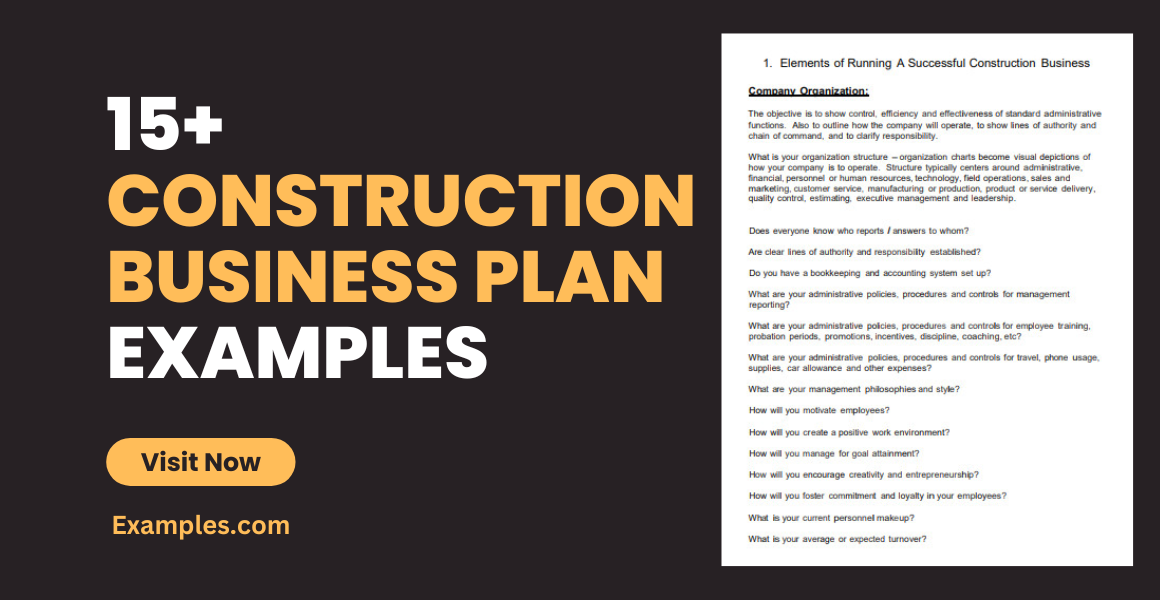
Whatever construction work you do whether it be commercial construction, landscaping , maintenance or building construction, your services alone won’t be enough to attract investors and clients. With a business plan , companies will be able to attract potential investors to help get their company from the ground up. Construction companies in particular sometimes need investors to get their project up and running. How will they be able to do that? By presenting a construction business plan to them.
15+ Construction Business Plan Examples
1. construction management business plan.
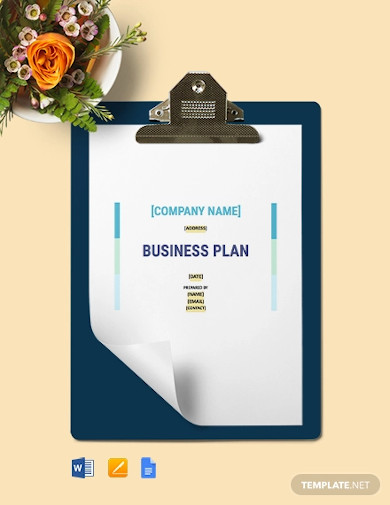
- Google Docs
- Apple Pages
Size: A4 & US
2. Construction Repair Business Plan
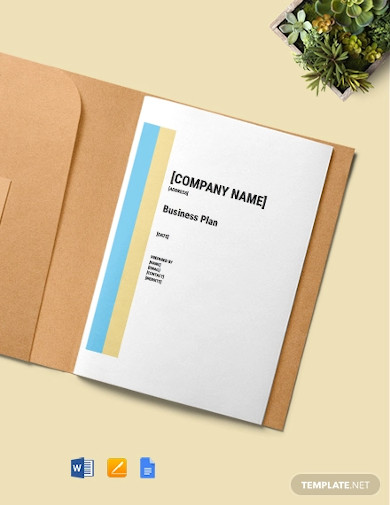
3. Construction Manufacturer Business Plan
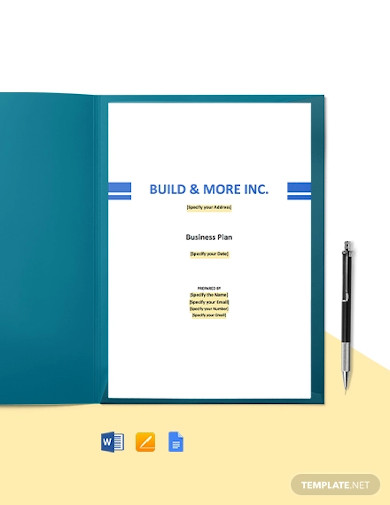
4. Construction Business Plan Example
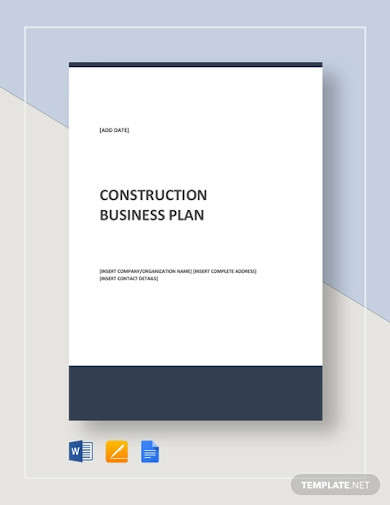
5. Construction Start-up Business Plan
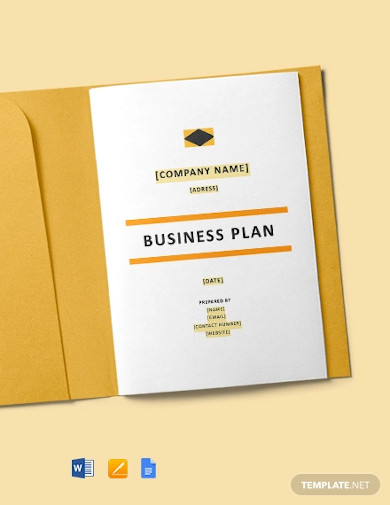
6. Construction Carpenter Business Plan
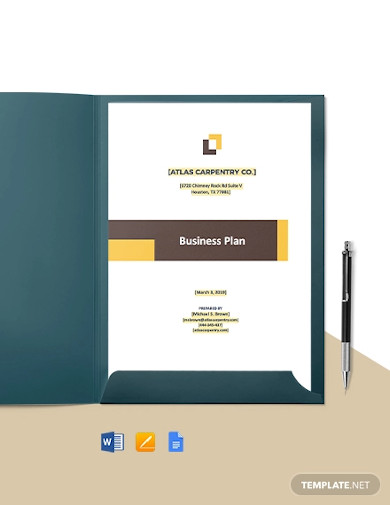
7. Simple Construction Business Plan

8. Sample Construction Business Plan
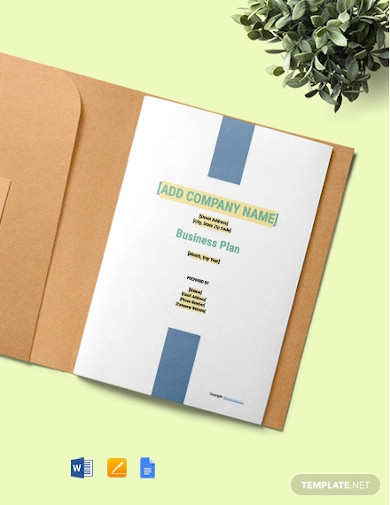
9. General Construction Business Plan

- Google Sheets
- Apple Numbers
10. Construction Company Business Plan Example
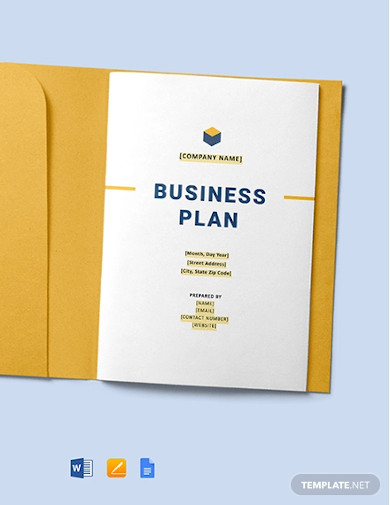
11. Sample Construction Business Plan
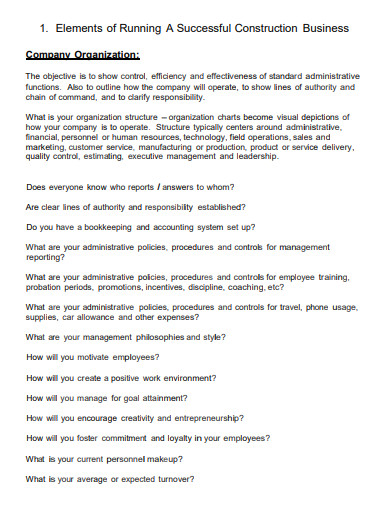
Size: 105 KB
12. Sustainable Construction Business Plan
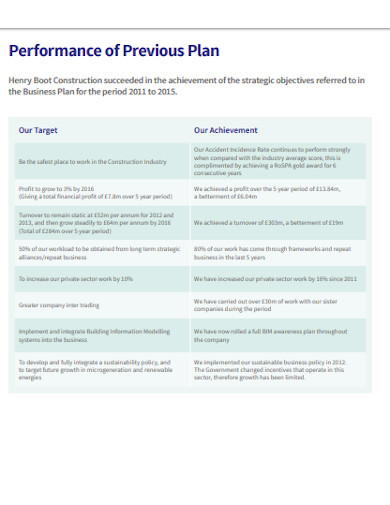
13. Construction Program Business Plan
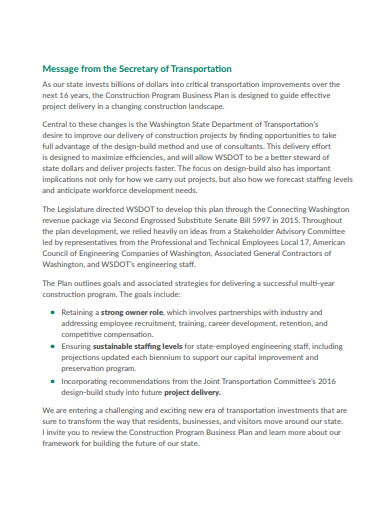
14. Business Plan For Construction Company
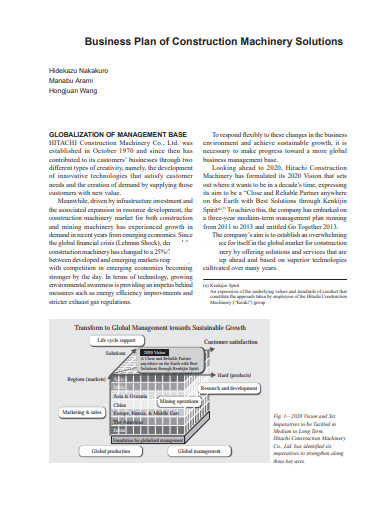
Size: 966 KB
15. Construction Plan for a Startup Business
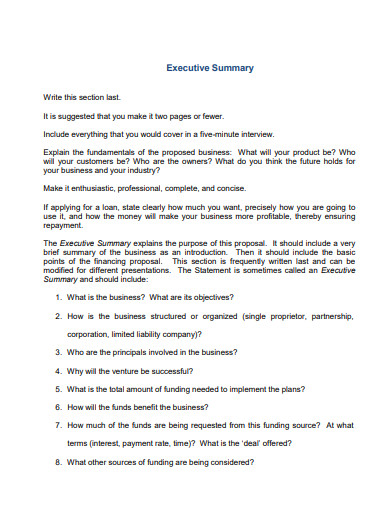
Size: 710 KB
16. Construction Management Business Plan

Size: 141 KB
What is a Construction Business Plan?
A construction business plan is a blueprint for how a construction company runs their operations. It contains information about the company itself and the construction services it provides. This business plan also contains the goals of the construction company as well as the business strategies used to achieve them. Content of a construction business plan also include safety plans and business procedures. Like all business plans it serves as a guide for the construction company on how to navigate in the world of business.
How to Create a Construction Business Plan?
According to a recent graph by Statista, the total spending of the United States has been going upwards from 2011 onwards. This means a lot of money can go in your company’s way especially once you get a hold of investors through an impressive construction business plan.
1. Create an Introduction to your Business
Everything that is important has to have a proper introduction. To get started with your business plan you need to write an introduction about your construction business first. Similar to a proposal you need to make a formal and a good impression with your readers when presenting the plan to them. Write a summary of your company; how it started, what it does, and where they currently operate. Write about the services your business provides but don’t go into the details just yet. Make it intriguing enough to make your readers want to read on.
2. State The Truth
When you are writing your construction business plan always remember to be truthful. False claims on your business plan may impress your readers at first. But when the truth is uncovered it can result in your business having a bad reputation and that can spell doom for your company . So make sure all your words are facts that can be backed up.
3. Fact Check and Include Documentation
Keeping in line with the previous step, take the time to fact check all your statements . When you are stating things about your company especially when it involves money and confidential information, make sure they are backed up by concrete evidence. Provide documentation as well as further proof when you write about your projects in your business plan so that means including photos and construction blueprints.
4. Include Your Strategies
This step is especially important when you are a startup company. When making your construction business plan write about the strategies that you have in order to reach the goals of your company. You can write about your marketing and financial strategies for a start. Write about the assets you have that enable you to achieve your plans such as the general contractors you have under your employ for example. Making this part allows you readers to know how you plan on bringing your company up and whether you have the means to achieve it.
How long does it take to write a construction business plan?
Creating a well thought out business plan for your construction company can take months depending on the knowledge you have and the detail you dedicate into making it.
How long should a construction business plan be?
A well written construction plan should take about 15 minutes to skim. In that time you should be able to convey everything important about your construction company. If it takes longer to read try to rework your plan by making it less wordy.
Who is the one who creates the construction business plan?
People who have a key position in the construction company are the ones who should be involved in creating the business plan . Somewhat such as the founder or CEO should be the one who usually prepares it but they can also be assisted by consultants with relevant knowledge.
Your construction business plan serves as a written blueprint on how to run your company. Give it a lot of thought when you are writing it down especially when you are going to use it to attract investors . With a well made plan you will be able to get even the most hesitant investors to work with your company. And with their help the clients will also be drawn to the company leading to more business and profit.
Text prompt
- Instructive
- Professional
Create a study plan for final exams in high school
Develop a project timeline for a middle school science fair.
May 15, 2024
Advertisement
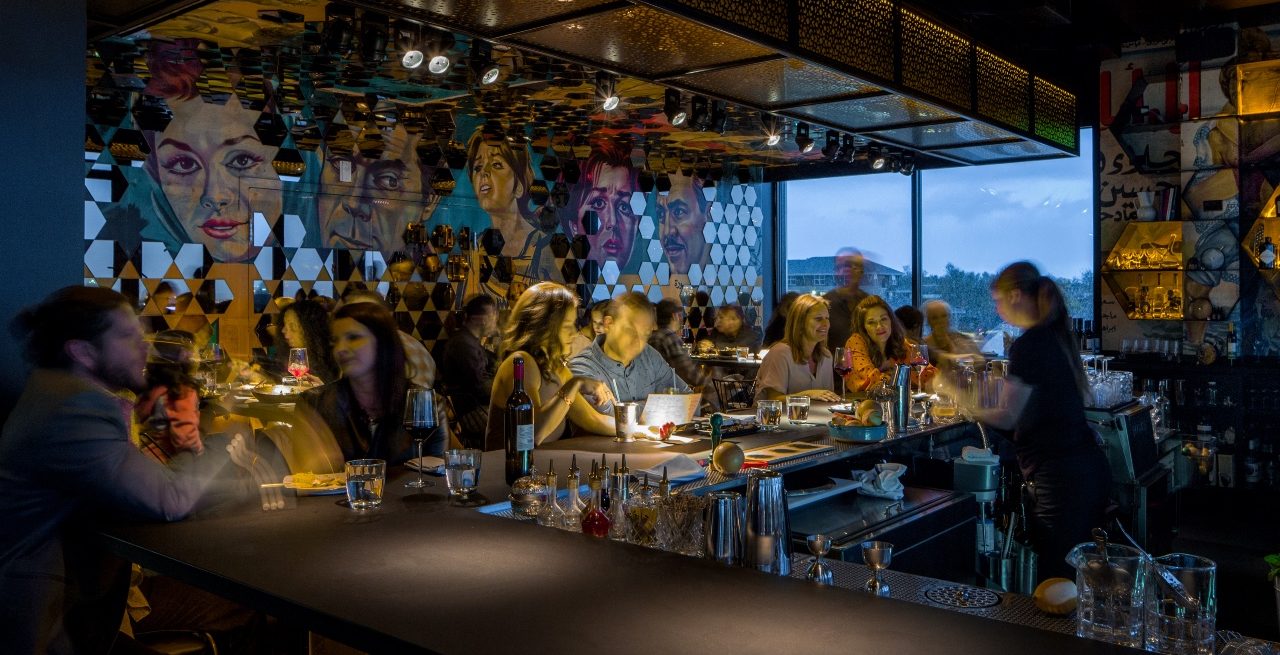
ESOPs and Sustainable Restaurant Culture
4 Min Read 5.14.2024 By MRM Staff
Denver-based chef Justin Cucci has long been a champion for sustainability at his farm-to table eateries. To date, he has opened six restaurants and venues, turning a former mortuary, gas station and brothel all into restaurants with globally inspired locally sourced menus. Cucci also wanted to create a sustainable culture for his employees and implemented a self-funded 100-percent employee stock ownership plan (ESOP) so his 325-plus Edible Beats employees will now share in the long-term financial worth of the company.
To learn more about the pros and cons of putting an ESOP into place, Modern Restaurant Management (MRM) magazine reached out to Cucci.
How did the idea of Employee Stock Ownership originate and why did you want to do it?
The idea had been kicked around almost five years prior to the ESOP transaction, in 2017. We had finished building brick & mortar restaurants, and my advisors asked me to think about a succession plan and look ahead to the next chapter of the restaurants.
Initially there were only two routes to take. One was to sell the restaurant group to a private buyer/buyers or investors, and pretty much take the money and run. The other route was to split the restaurants up into individual entities and try to sell the restaurants piece by piece. Both of those choices felt foreign to me, as I wasn't looking to escape and just peace out, and it also felt like it would short change many of the awesome humans that helped me build the restaurants, and grow them.
So when I found out about an ESOP transaction, it really felt like everybody involved would win, basically a wIn-win-win. My family and I would be able to reap the rewards over time, of selling the restaurants to the employees, and at the same time, as seeing the restaurants through as a legacy and long-term business decision.
Additionally, the employees would win, since there is no money needed from the employees, to achieve being an ESOP, and they would share in any and all growth of the restaurant, and the financial gains.
Finally, the guests/community would win, by supporting an employee-owned business that keeps its gains in the local economy, supporting local businesses and individuals.

What was the process and challenges of implementing the plan?
The process was incredibly complex, and very expensive. The initial cost is almost $500,000 to get all of the pieces in place, and create the plan documents, and submit it to the government agency that oversees it. It requires a large team of lawyers, consultants, CPAs, bookkeeping, and bankers, in addition to a Third-Party Administrator and a Trustee.
The biggest challenge might have been the timing, and how that affected financing (or lack thereof) which was the post COVID years of 2021/2022. There was very little to zero support from banks that I had been with for 15 years, and not only was it impossible to get the funds to pay for the ESOP, but many of the loans we had, were called in, since the bankers felt that we were in a high credit risk industry. So, the transaction became even more complex as we sought to pay for the transaction internally, and to essentially do an owner carry note on the loan.
How does it work and what was initial response from employees?
An employee stock ownership plan (ESOP) is an employee benefit plan that gives workers ownership interest in the company in the form of shares of stock.
From day one, employees were both very interested in understanding the benefits, and structure of the ESOP, and how each employee would benefit from the transaction. At the same time, it is a very complex mechanism that takes time to build value, as a business grows, and as we pay down debt. Essentially an ESOP is a big picture plan that can double as an employee's retirement account. So, employees were sometimes confused at how their own contribution could affect the ESOP and benefit their shares.
ESOPs are a slow build, and grow gradually, then suddenly as the business builds value, pays down debt, and increases profitability.
What lessons have you learned in the time it’s been in place?
We have learned many lessons, as a young ESOP. Mostly that we cannot do too much outreach to employees to help them truly understand the structure, vesting and payout of their shares. We figured out that an ESOP committee was a strong engine of communication, and we created one that had three members from each of our five restaurants. One hourly FOH employee, one hourly BOH employee, and one salaried manager.
We also learned that financial education is critical for employees to truly understand what brings value and how they can affect that value. We created "ESOP Boards" for each restaurant, that tracks multiple categories in our gross weekly margin, and gives the staff a much clearer picture of the machinations of each restaurant.
How has the plan affected staffing and retention?
There's no doubt retention has increased because of it, but not at the level we would have liked. We still are having turnover that sometimes seems excessive. And though we know of many employees that are connected to Edible Beats in a much deeper way, because of the benefit programs we have, and due to the fact that we are employee owned.
But in our industry, there is a transient nature to the hourly employees, and they sometimes struggle to see the big picture, and do not always possess the patience to see the ESOP through to fruition.
What do you think other restaurant owners can learn from your example?
I hope that other restaurateurs are willing to look into the pros and cons of an ESOP, there are too few true employee-centric plans that favor the contributions of the employee. ESOPs do just that and there’s zero cost to the employees.

IMAGES
VIDEO
COMMENTS
February 28, 2024. Business Plan. Creating a comprehensive business plan is crucial for launching and running a successful restaurant. This plan serves as your roadmap, detailing your vision, operational strategies, and financial plan. It helps establish your restaurant's identity, navigate the competitive market, and secure funding for growth.
A restaurant business plan defines the concept, operational strategy, and business goals of a restaurant. The plan can serve as both a blueprint for day-to-day internal activities and a pitch for potential funding sources. Typically, a restaurant business plan should include: Company information. Mission and vision. Location (s) Legal structure.
This business plan contains an overview of all the planning that is required for this business. Location, staff, food, and service quality etc. are some important aspects that the [owner(s)]of the restaurant will focus on. Strategic plans for marketing, human resources, and menus will be prepared as mentioned above.
The funding will be dedicated for the build-out and design of the restaurant, kitchen, bar and lounge, as well as cooking supplies and equipment, working capital, three months worth of payroll expenses and opening inventory. The breakout of the funding is below: Restaurant Build-Out and Design - $100,000. Kitchen supplies and equipment ...
10200 Bolsa Ave, Westminster, CA, 92683 https://upmetrics.co (650) 359-3153 [email protected]. Restaurant Business Plan. John Doe. [Your Tagline] Table of Contents. Executive Summary4 Business Description 5 Mission Statement 5 Goals 5 Plan Summary 5 Capital Request 6. Business Description7 Business Overview 8 Location 8 Facilities 8 Design ...
Contents' will list the main sections covered in your business plan. It'll look something like this: 6 Executive Summary - p. 7 A one-page overview of everything in your business plan. Business Overview - p. 8 Your contact information & basic profile. Business Description - p. 9 A one-page overview of everything in your business plan.
Color. Skip to start of list. 19 templates. Create a blank Restaurant Business Plan. Restaurant Business Plan in Yellow Black White Friendly Dynamic Style. Document by Canva Creative Studio. Brown and White Modern Restaurant Business Plan Document. Document by Morp. Restaurant Business Plan in Orange Light Yellow Color Blocks Style.
Here you go, download our free restaurant business plan pdf, and start writing. This intuitive, modern, and investment-ready template is designed specifically for restaurants. It includes step-by-step instructions & examples to help in creating your own restaurant business plan.
Here's how to get started with your new restaurant business plan in 10 easy steps: Fill out your contact information in the form above and click "Submit.". Click the "Download" button on the next page to save the business plan document to your device. Open the document in Word, Pages, or your word processor of choice.
Milestones. Obtain necessary permits and licenses — June 1, 2023. Complete renovations and set up — August 1, 2023. Launch website and social media accounts — September 1, 2023. Open for business — October 1, 2023. Start offering catering services — January 1, 2024. Achieve consistent monthly profitability — June 1, 2024.
Overview of Restaurants Industry. According to IBIS World, the chain restaurant industry market size is $54.2 billion in 2024. From 2018 to 2022, Chain Restaurant Industry grew 2.1% on average per year. It is expected to grow by 6.5% in 2024. This industry's major products and services include:
To promote the business, the owners plan to launch an aggressive marketing campaign that will include print ads, radio spots, and social media. In addition, the restaurant will partner with local businesses to offer discounts and promotional offers. The owners have estimated start-up costs of $500,000.
Restaurant Business Plan Template. Download our template and start creating your restaurant business plan. Your restaurant business plan is an outline of your future success. A well-formulated plan helps put the big picture together no matter how good your restaurant ideas are. A business plan helps prove the viability of your thoughts and can ...
This section of your restaurant business plan should have two key elements as follows: Everyday short-term processes include all of the tasks involved in running your restaurant such as serving customers, procuring supplies, keeping the restaurant clean, etc. Long-term goals are the milestones you hope to achieve.
Back of the house. Talk about the details of the back-of-house in your restaurant, such as the commercial kitchen equipment your cooks and chefs will be wielding during their shifts and what the kitchen layout and workflow will be. If you have mock-ups - such as a kitchen floor plan - you can include them here.
4. Strategy. Within the "Strategy" section, a 3-year development plan is outlined, specifying the necessary initiatives to make your restaurant highly profitable. Moreover, you will find a marketing strategy, a risk management approach, and a Business Model Canvas specifically designed for a restaurant in this section. 5.
Download your free small restaurant business plan template. If you're ready to start a restaurant, you can download our free small restaurant business plan template from our library of over 550 sample business plans. Get started today, and discover why businesses that plan grow 30% faster than those that don't. More restaurant business plan ...
In your Executive Summary, you want to paint a picture and create a narrative for the birth of your restaurant. Get people emotionally invested in your vision. Introduce yourself and your company to your reader. Talk about your planned opening location. You can start in the opening paragraph with some abstract information but then drill down on ...
Step 5: Marketing and Sales Strategy. Marketing Plan: Develop strategies for promoting your restaurant, including branding, advertising channels, and promotional activities. Sales Strategy: Outline how you will generate and grow sales, including pricing strategy and customer loyalty programs.
The real version of Growthink's Ultimate Restaurant Business Plan Template is much more than a fill-in-the-blanks template. That template professionally guides you step-by-step so you can quickly, easily, and expertly complete your business plan. Perhaps most importantly, it includes complete financial projections.
for the venture will be 07/04/2010. This business plan documents the precise strategies and activities that will be taken in order to commence operations of the business. The Moose Mountain Café will be located at 200 Main Street, Moose Mountain, NH, with seating for 20 patrons. The rent is $600 a month, with a five-year lease available. The site
Your restaurant business plan company overview should include: Purpose: The type of restaurant you're opening (fine dining, fast-casual, pop-up, etc.), type of food you're serving, goals you ...
Financial Projections & Funding. Avadh plans to start 4 company-owned restaurants. The first restaurant is Of this sum, $400,000 will be supplied in the shape of equity with the remainder, $400,000 coming out of a term loan given by a commercial lender. Avadh plans to raise $2,000,000 in equity funding.
Whatever construction work you do whether it be commercial construction, landscaping, maintenance or building construction, your services alone won't be enough to attract investors and clients.With a business plan, companies will be able to attract potential investors to help get their company from the ground up.Construction companies in particular sometimes need investors to get their ...
An employee stock ownership plan (ESOP) is an employee benefit plan that gives workers ownership interest in the company in the form of shares of stock. From day one, employees were both very interested in understanding the benefits, and structure of the ESOP, and how each employee would benefit from the transaction.